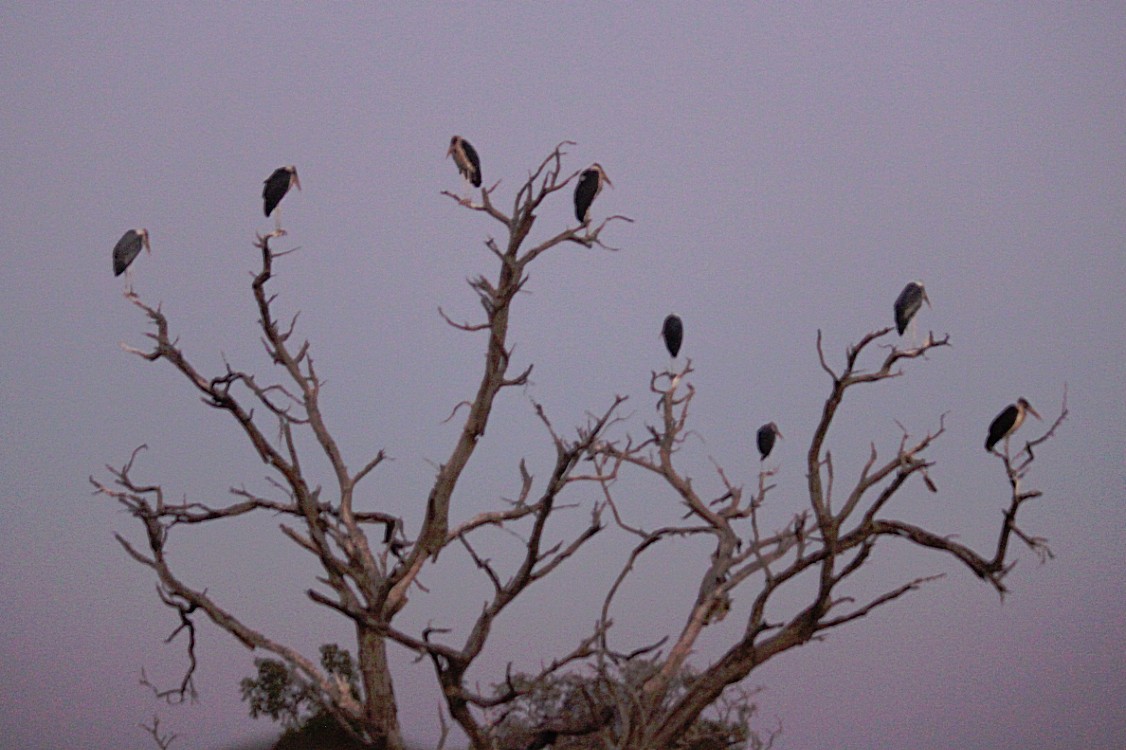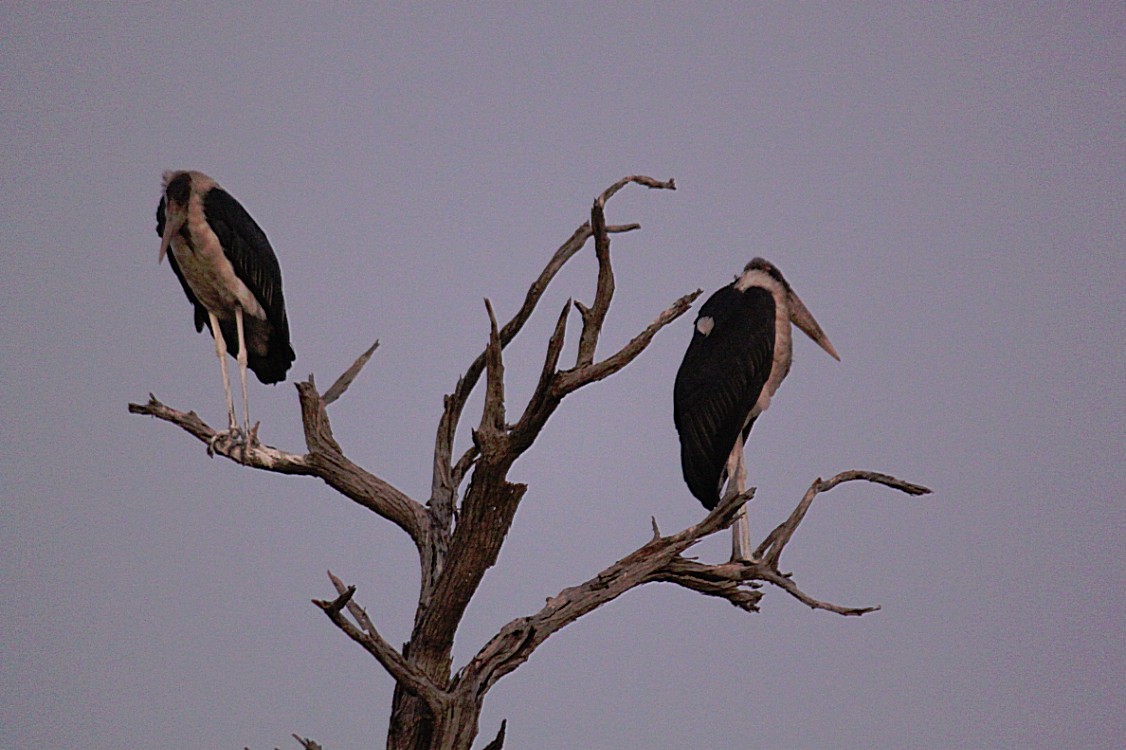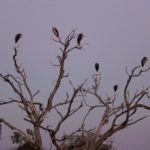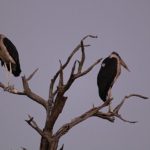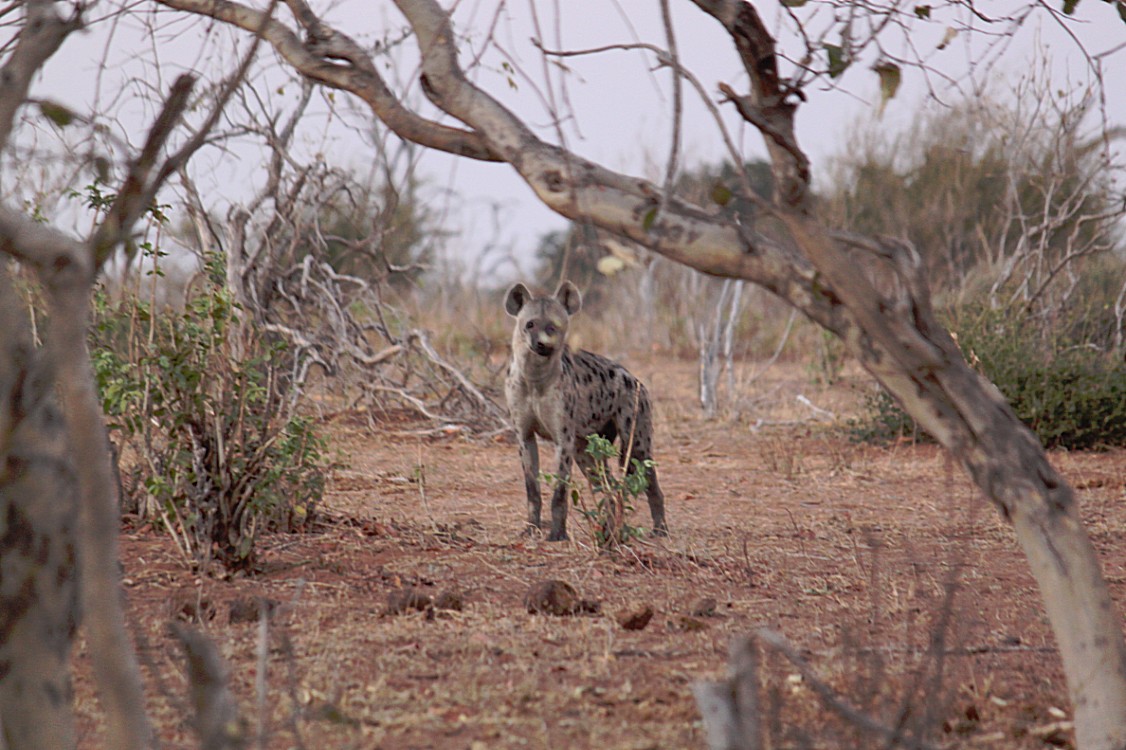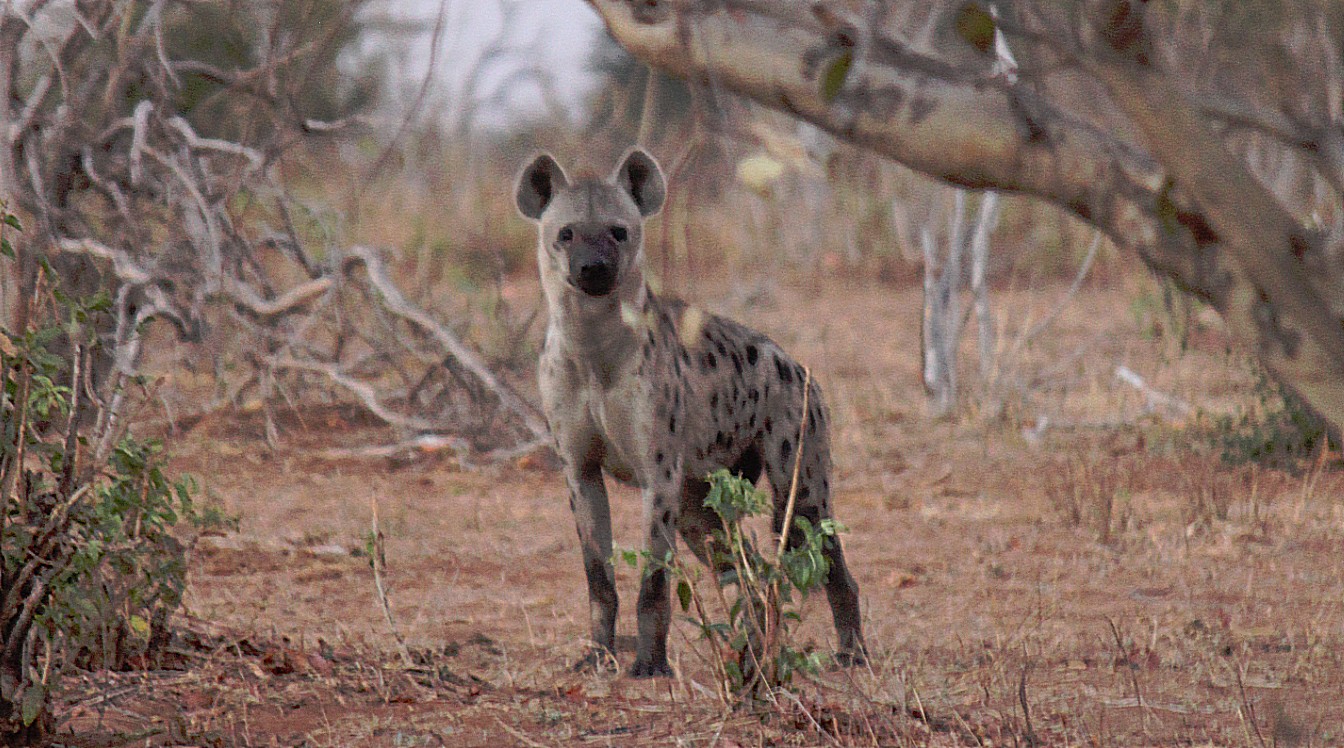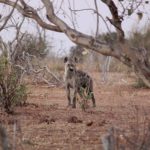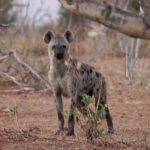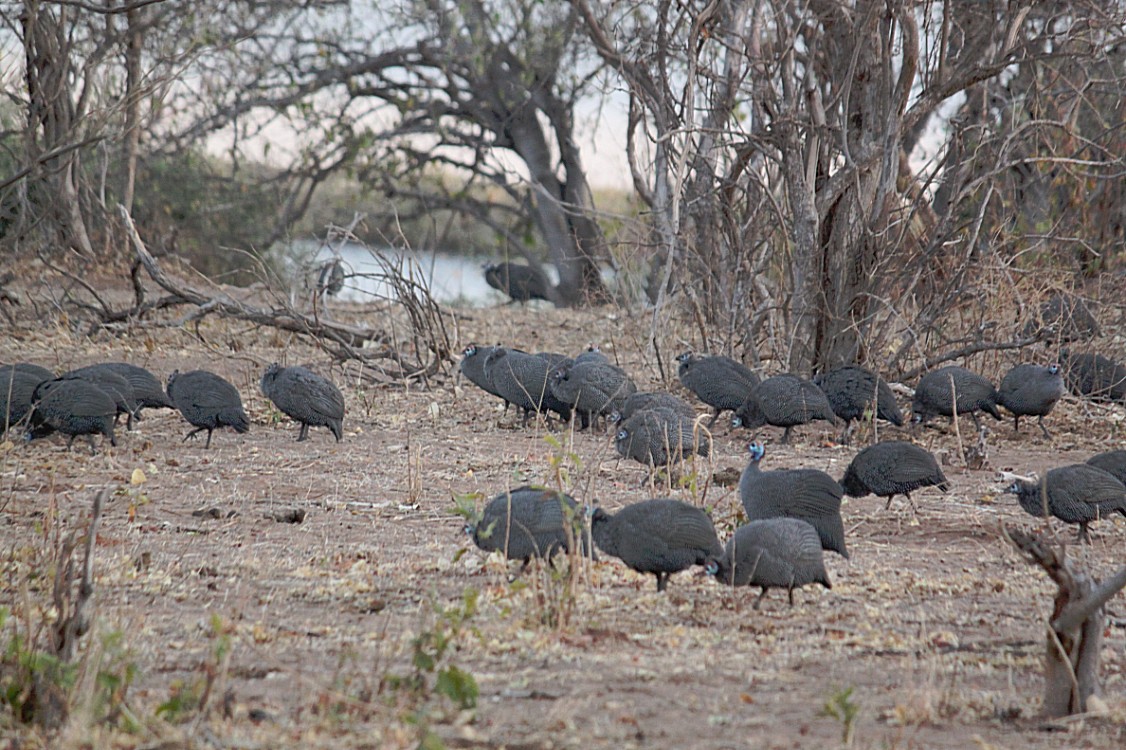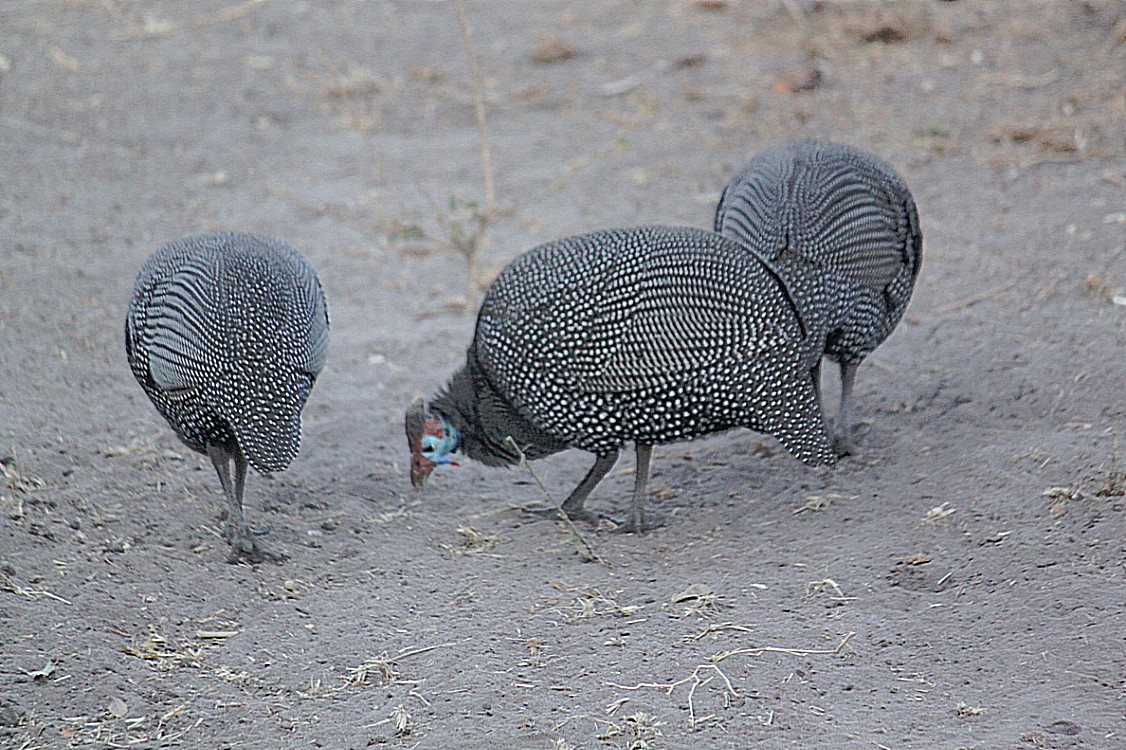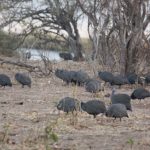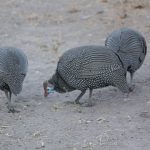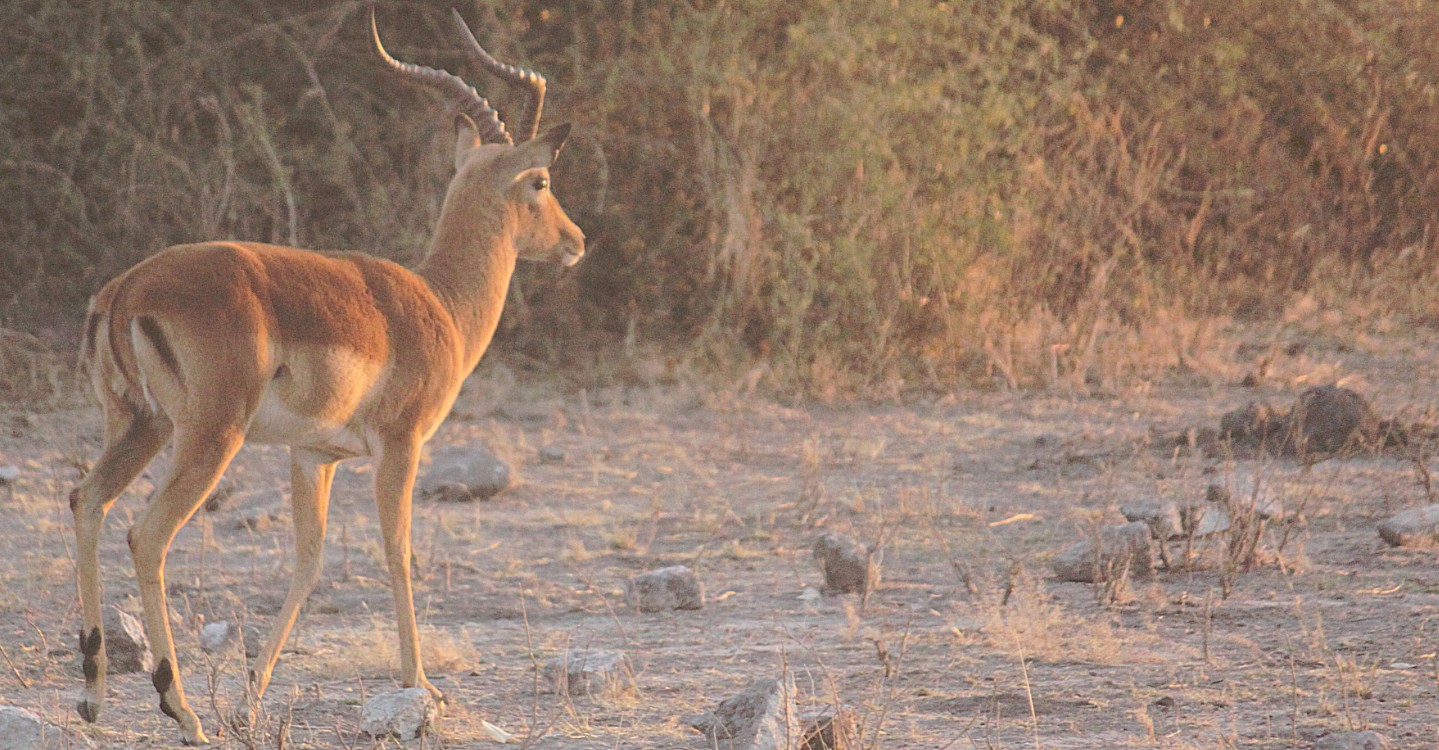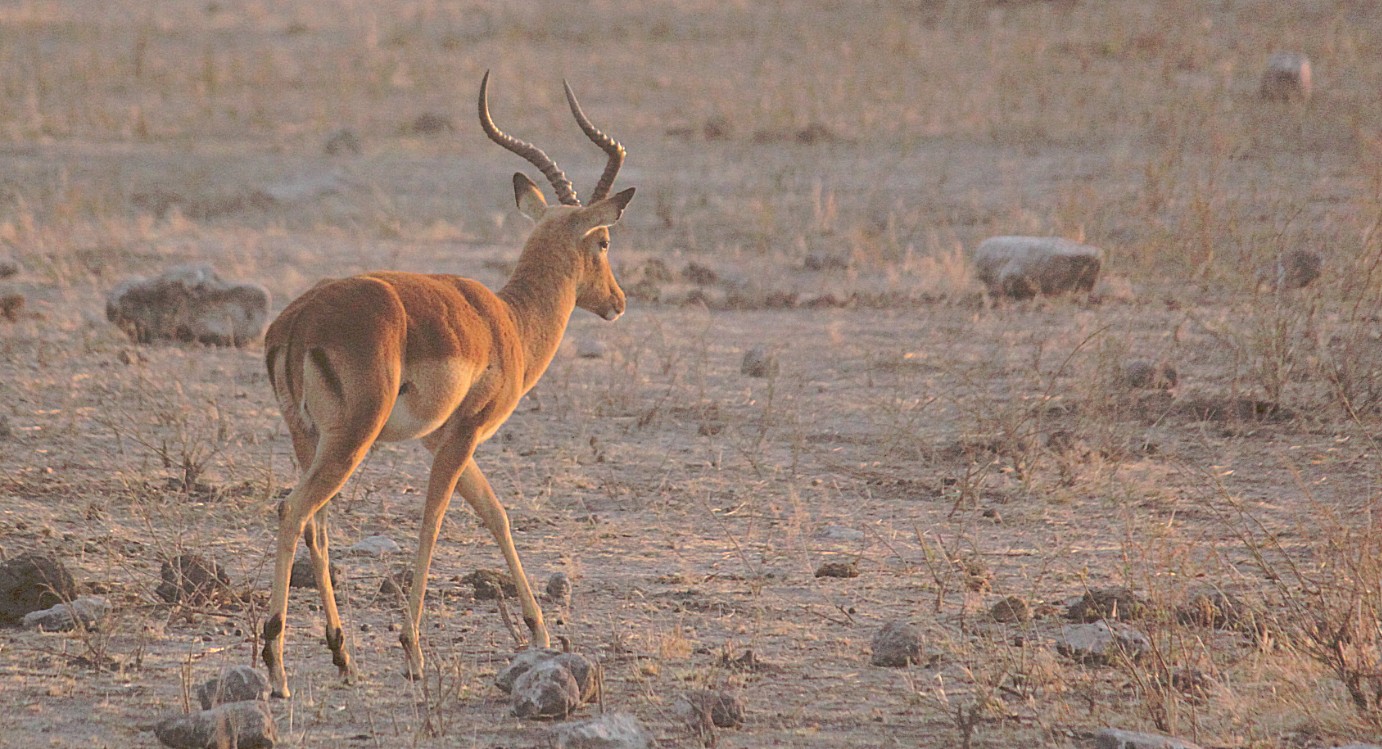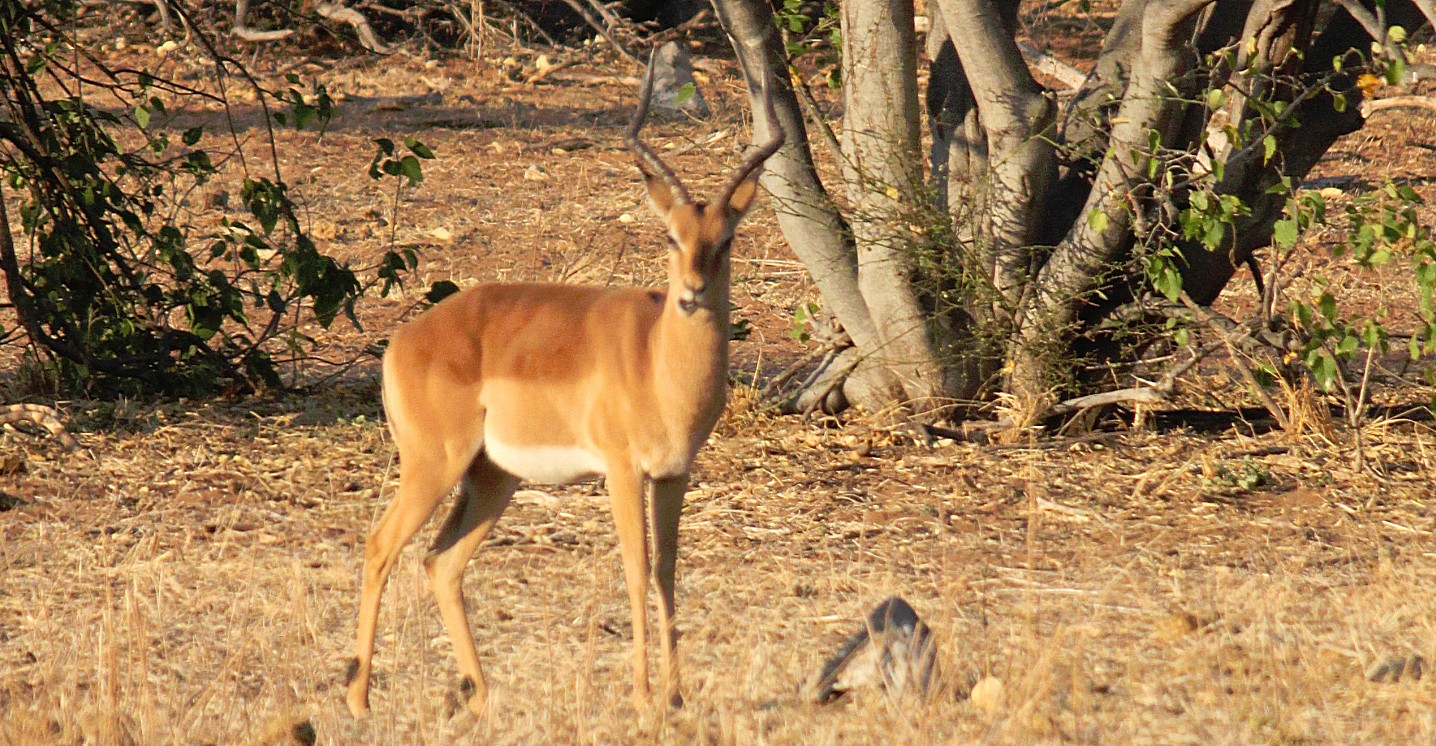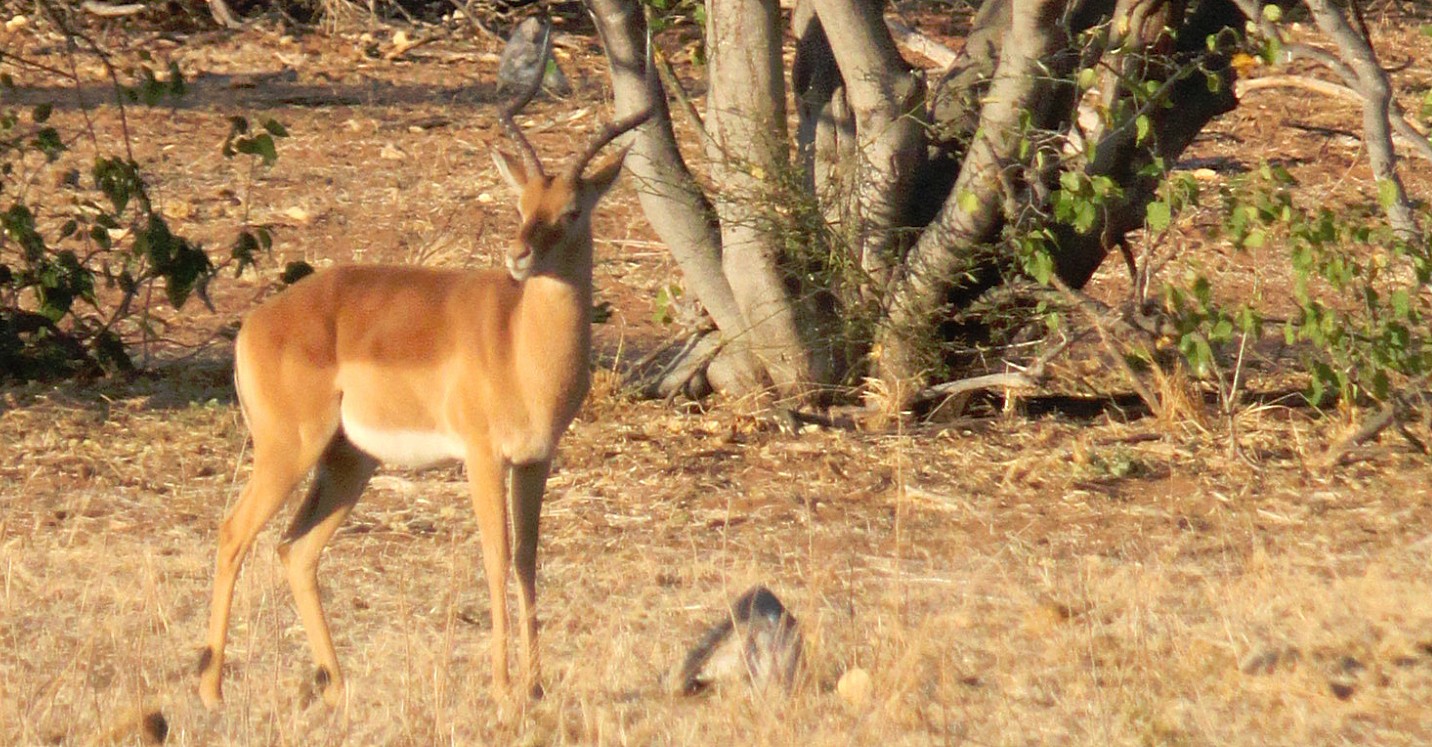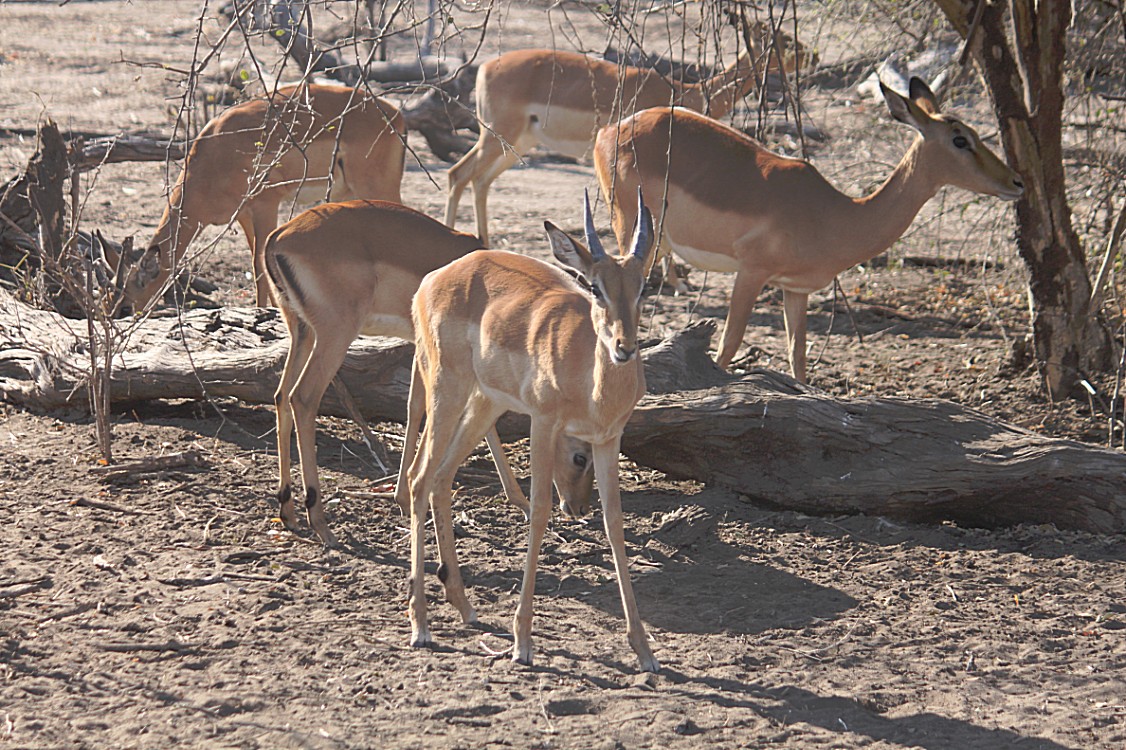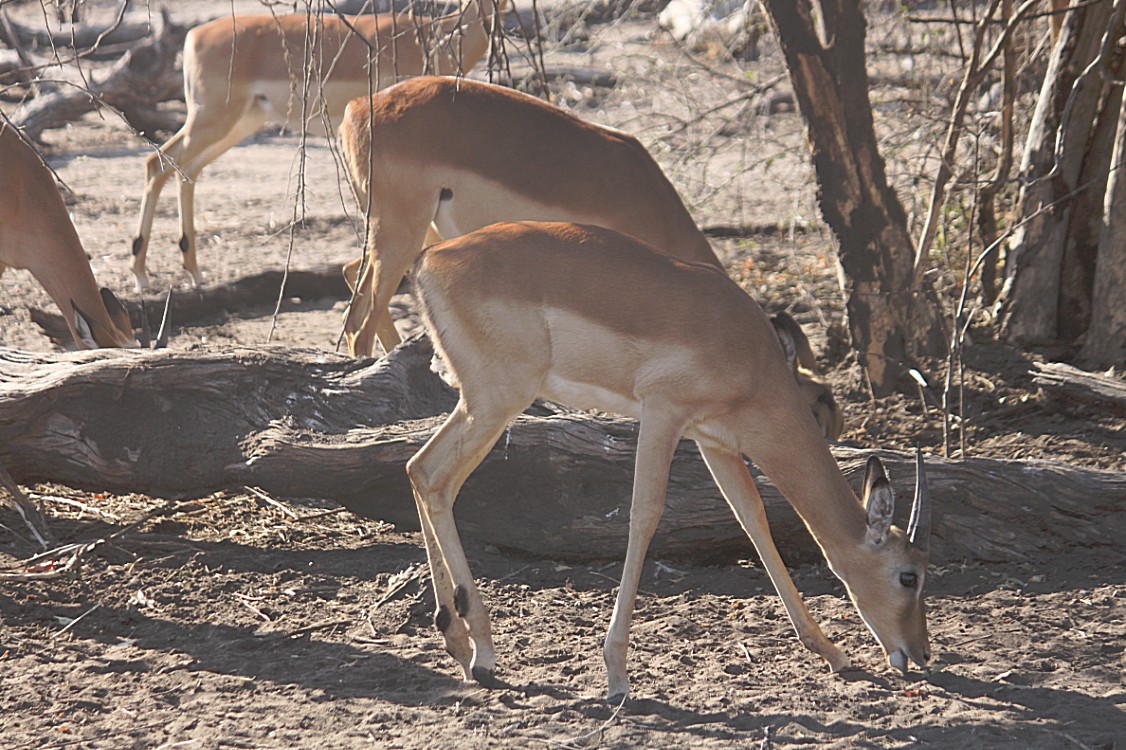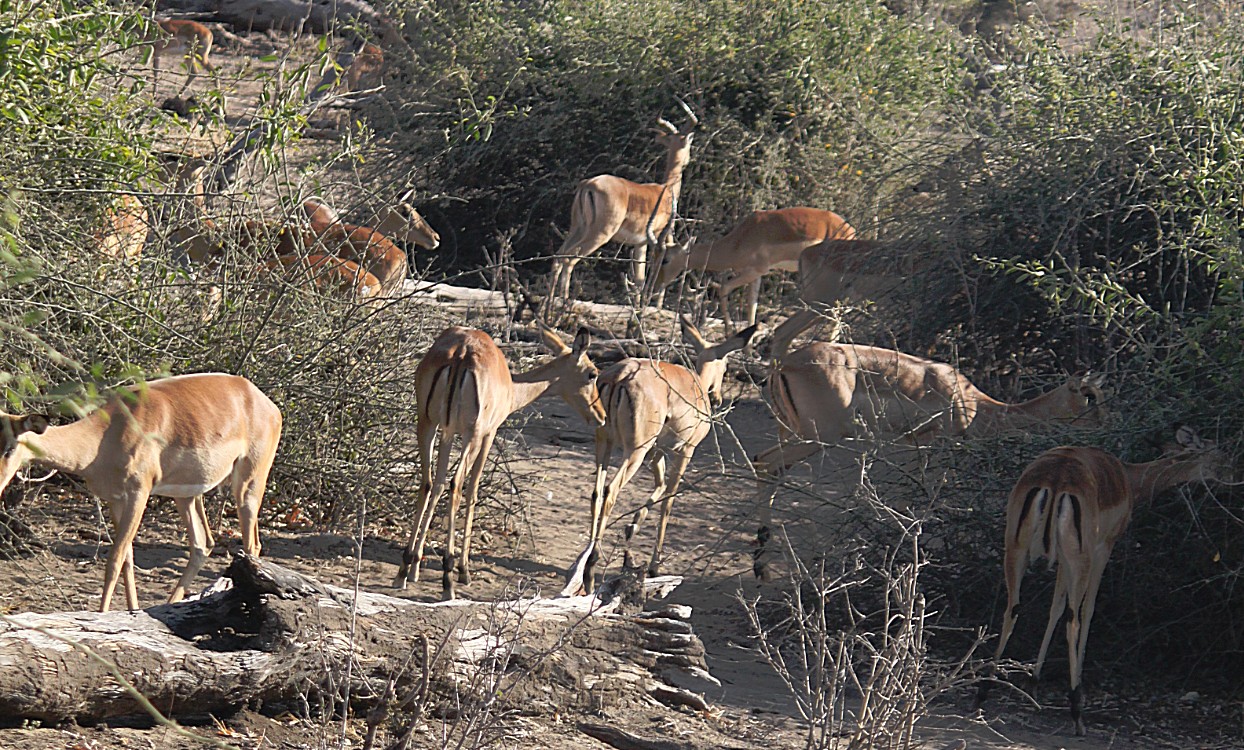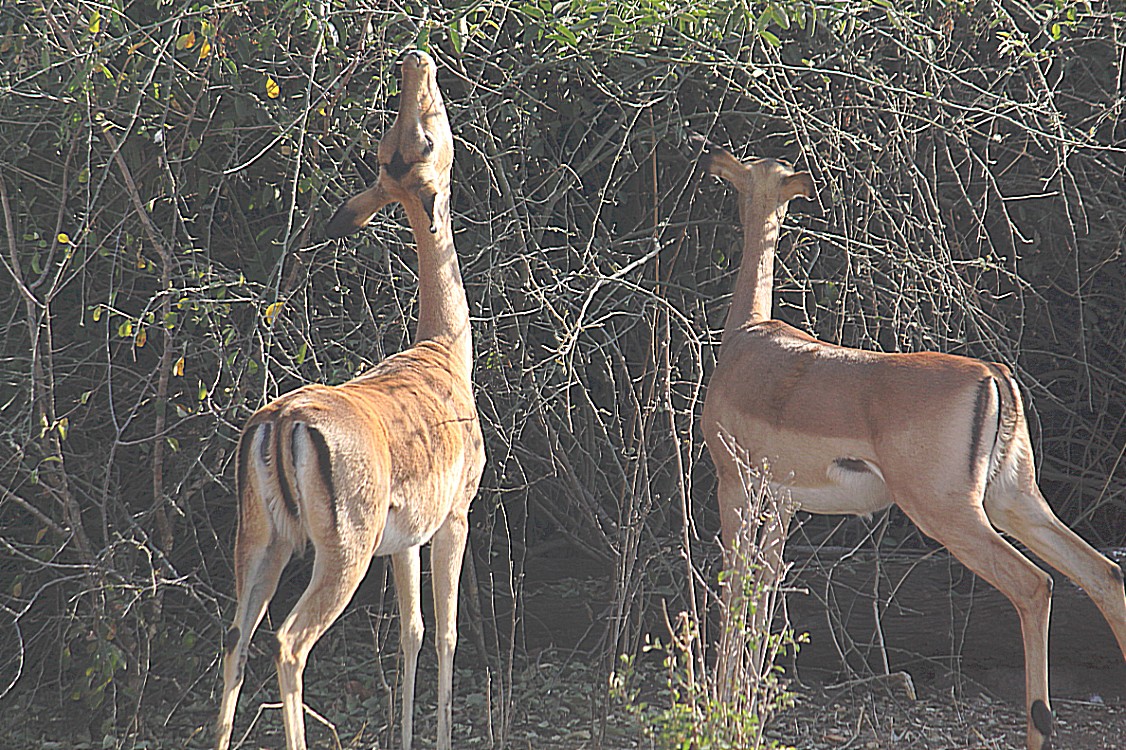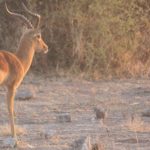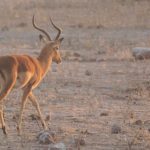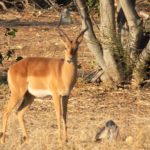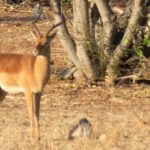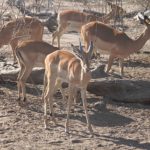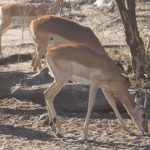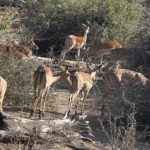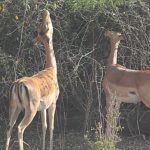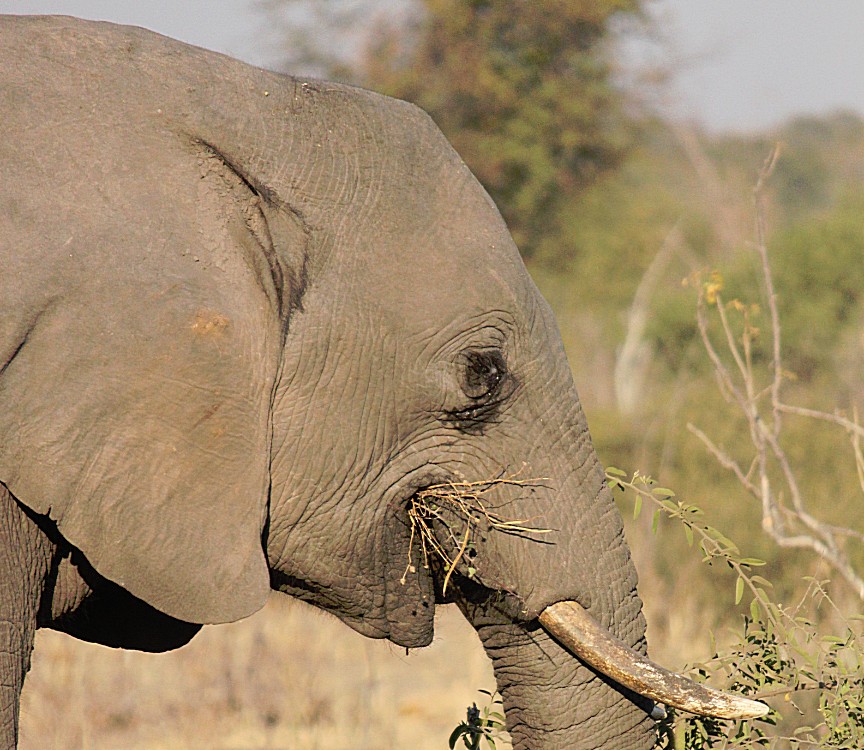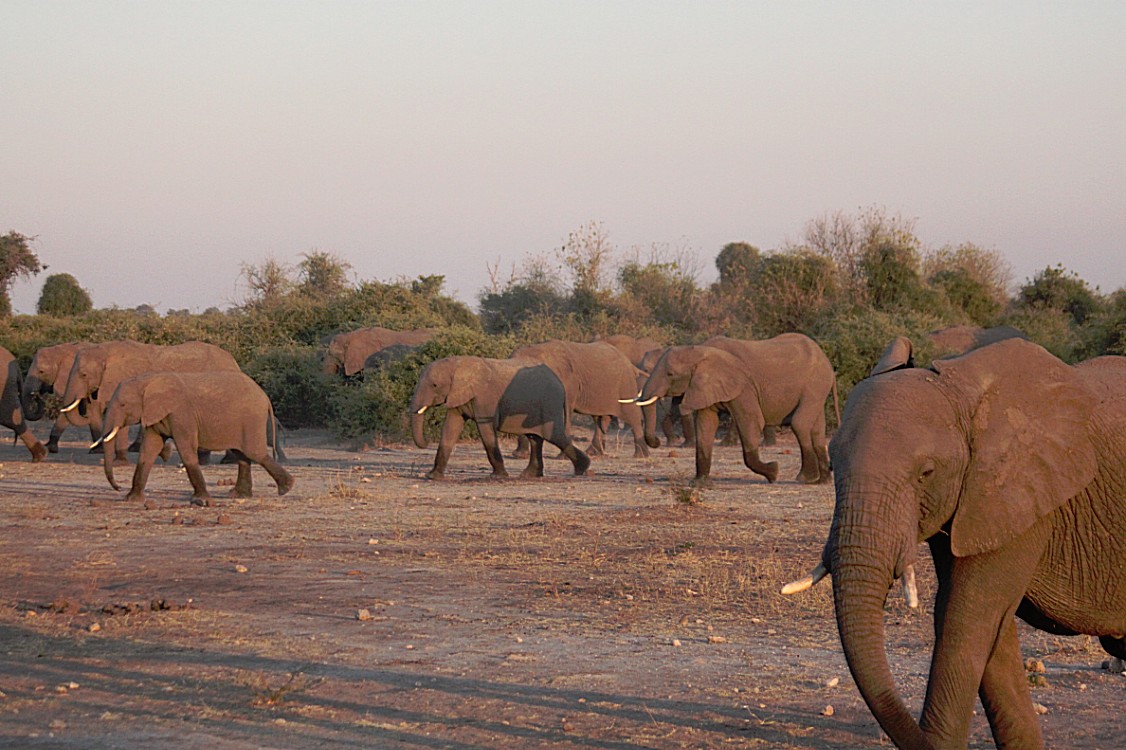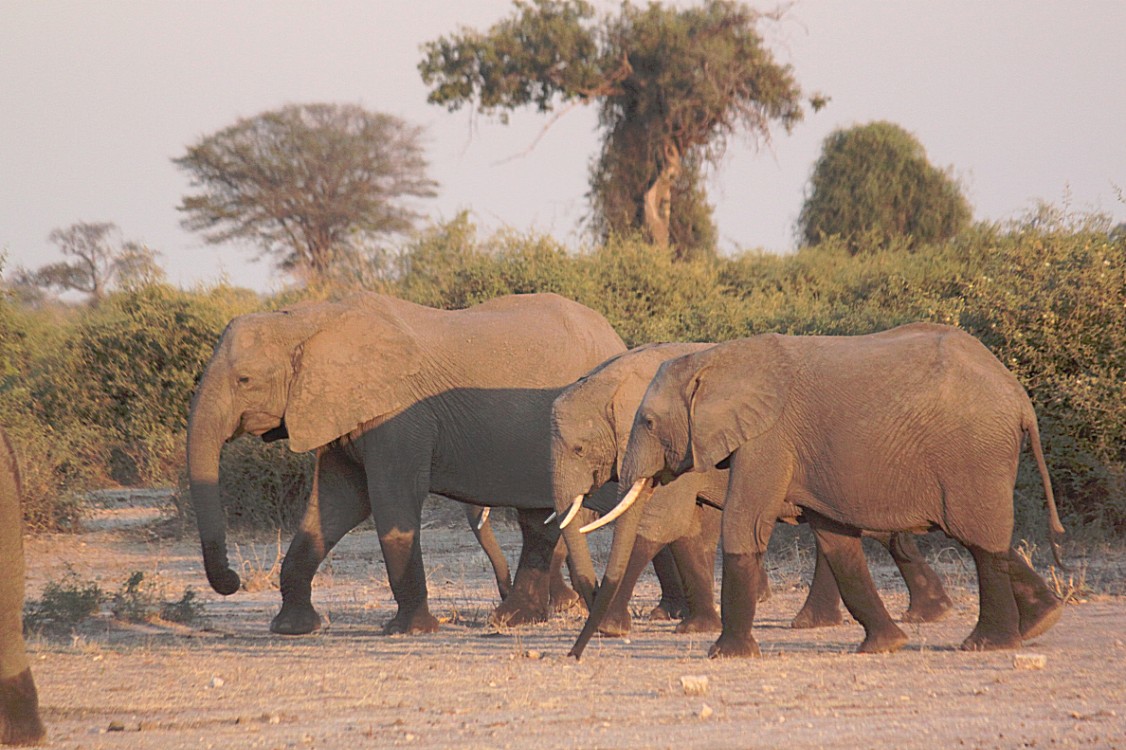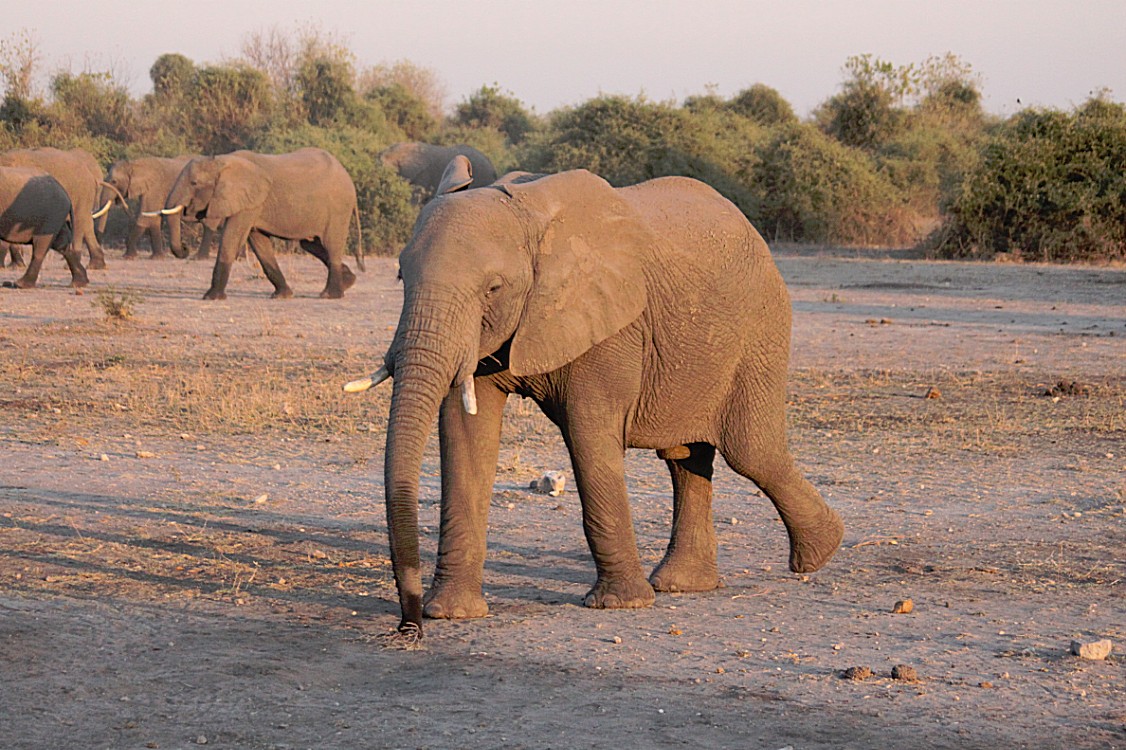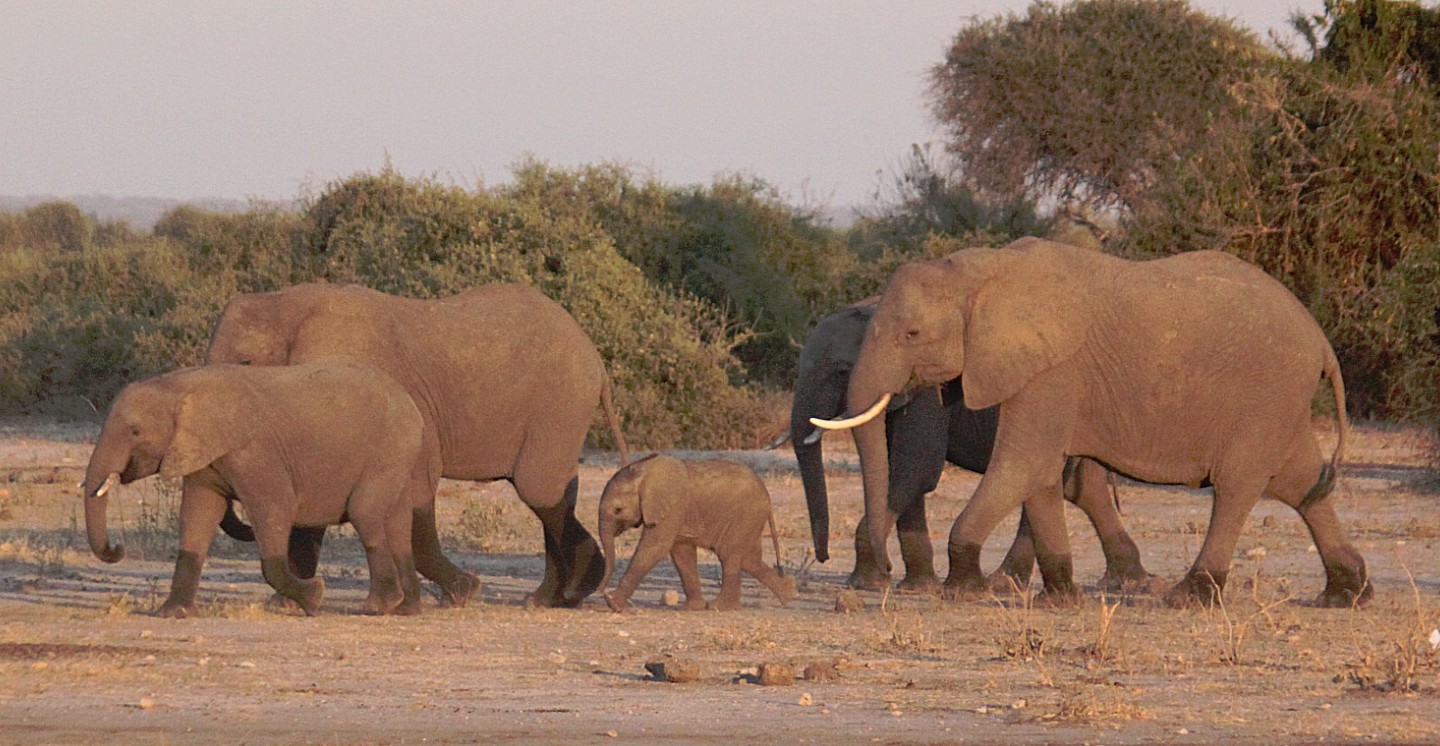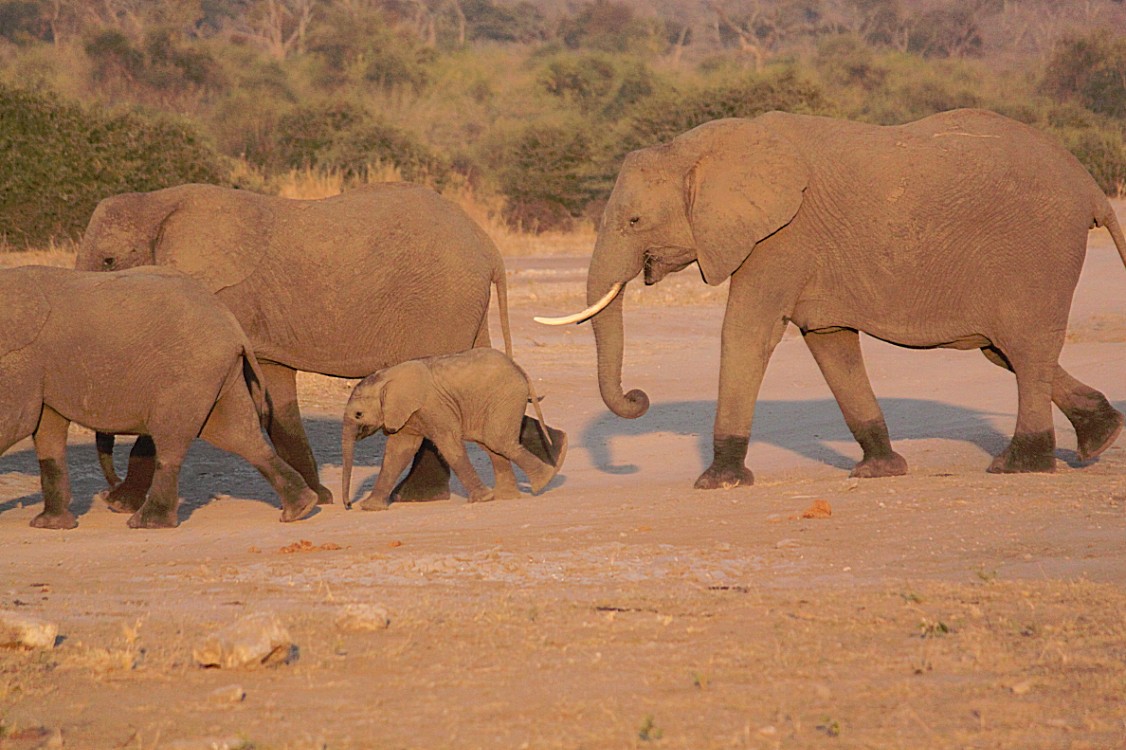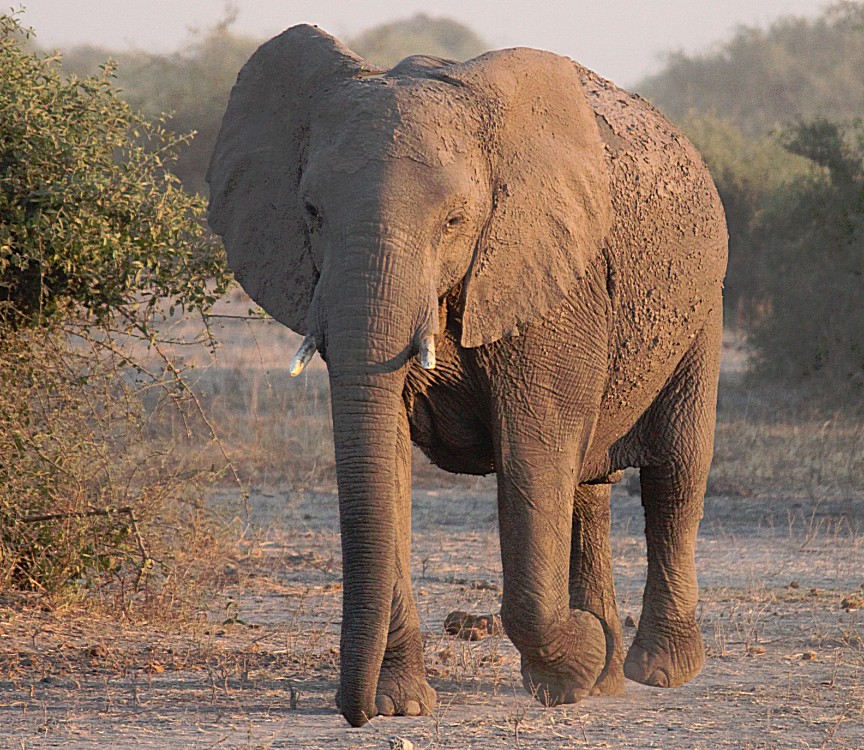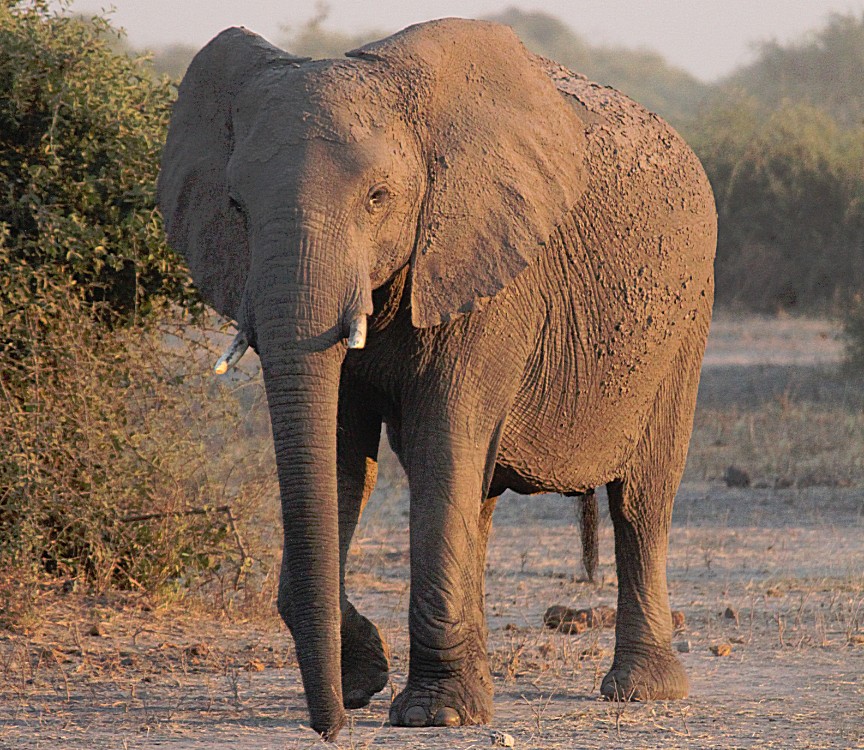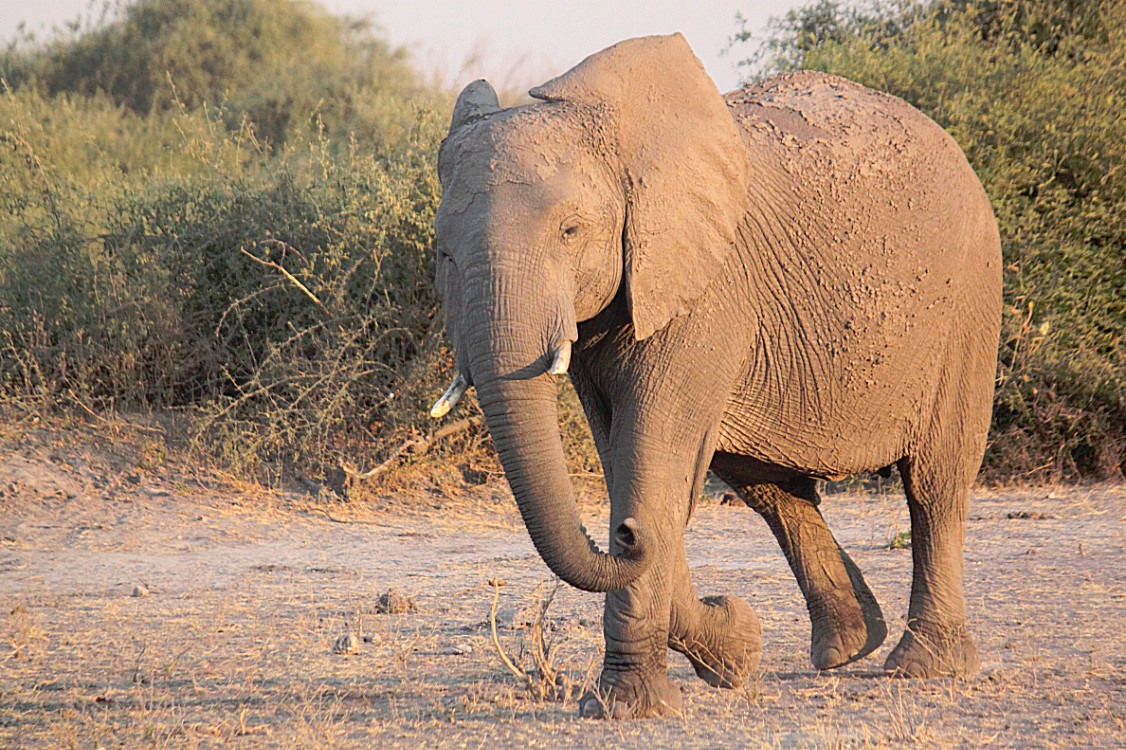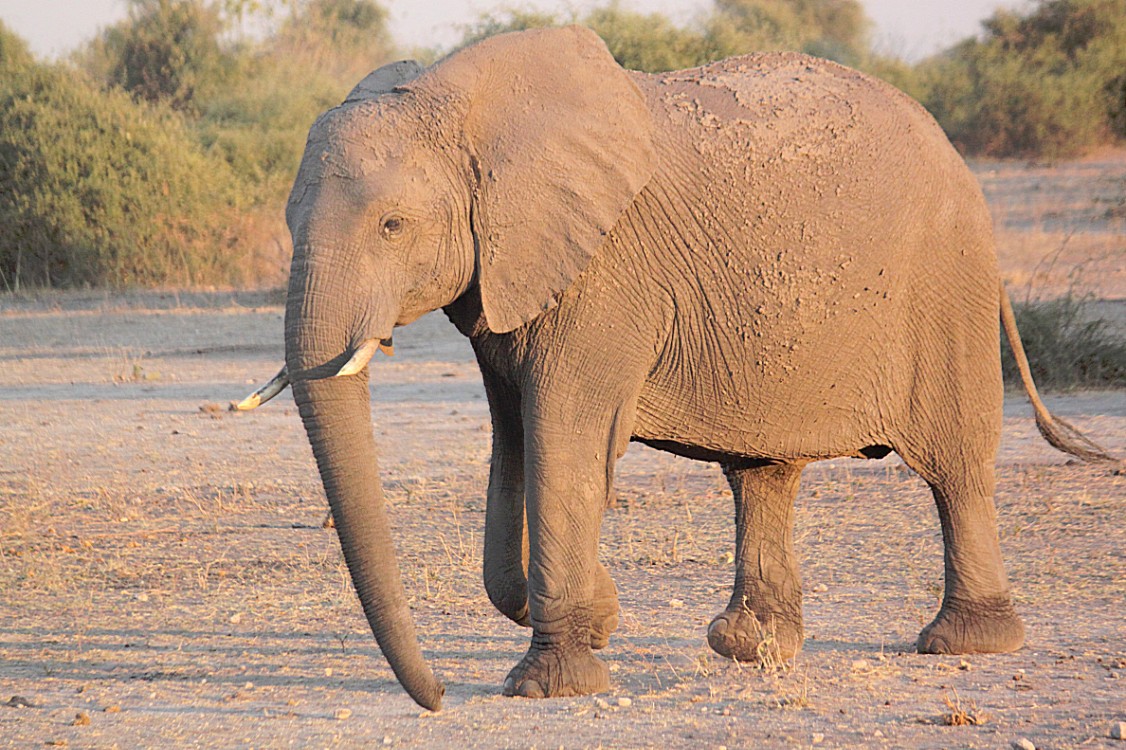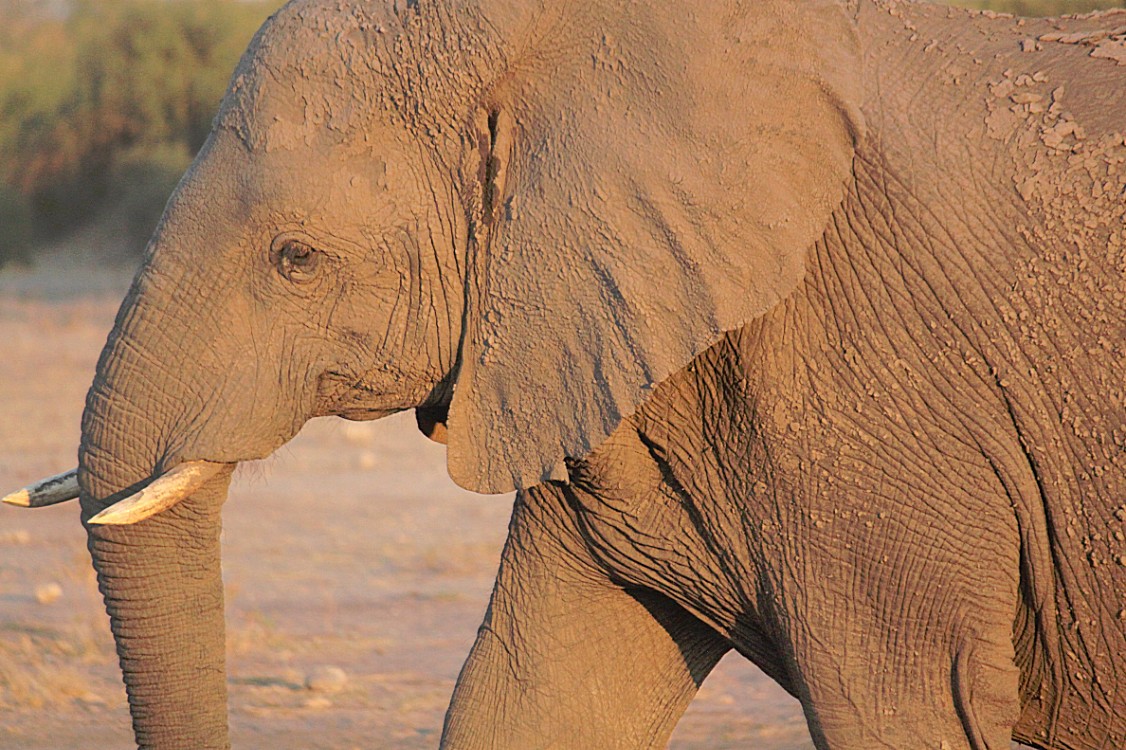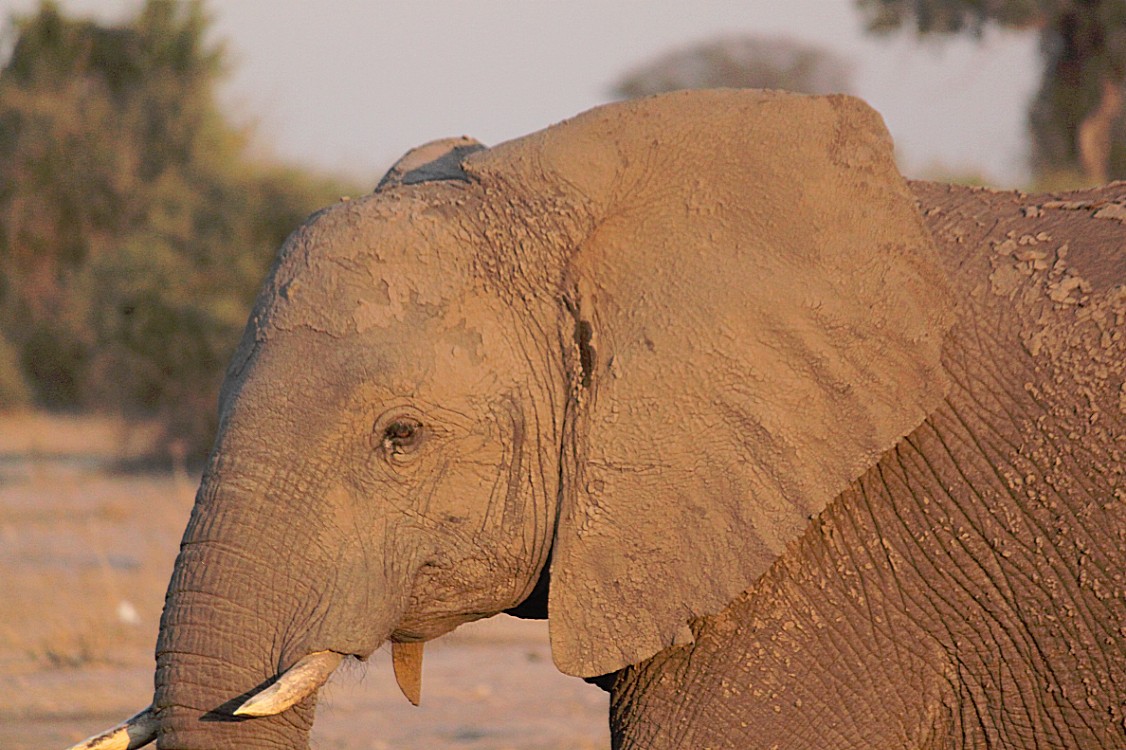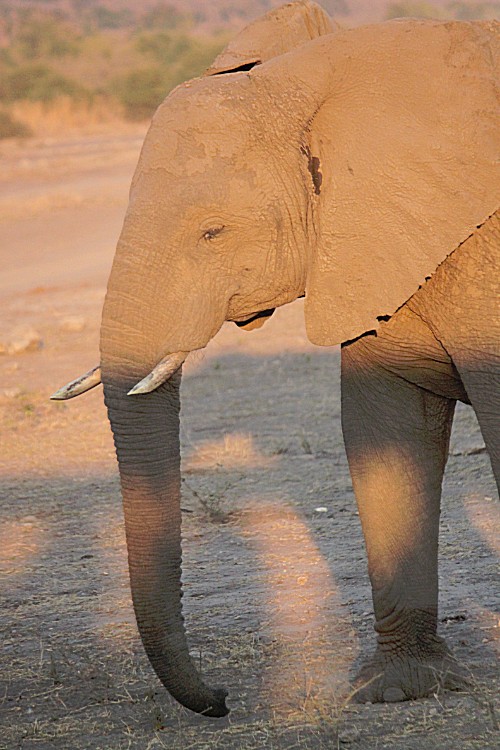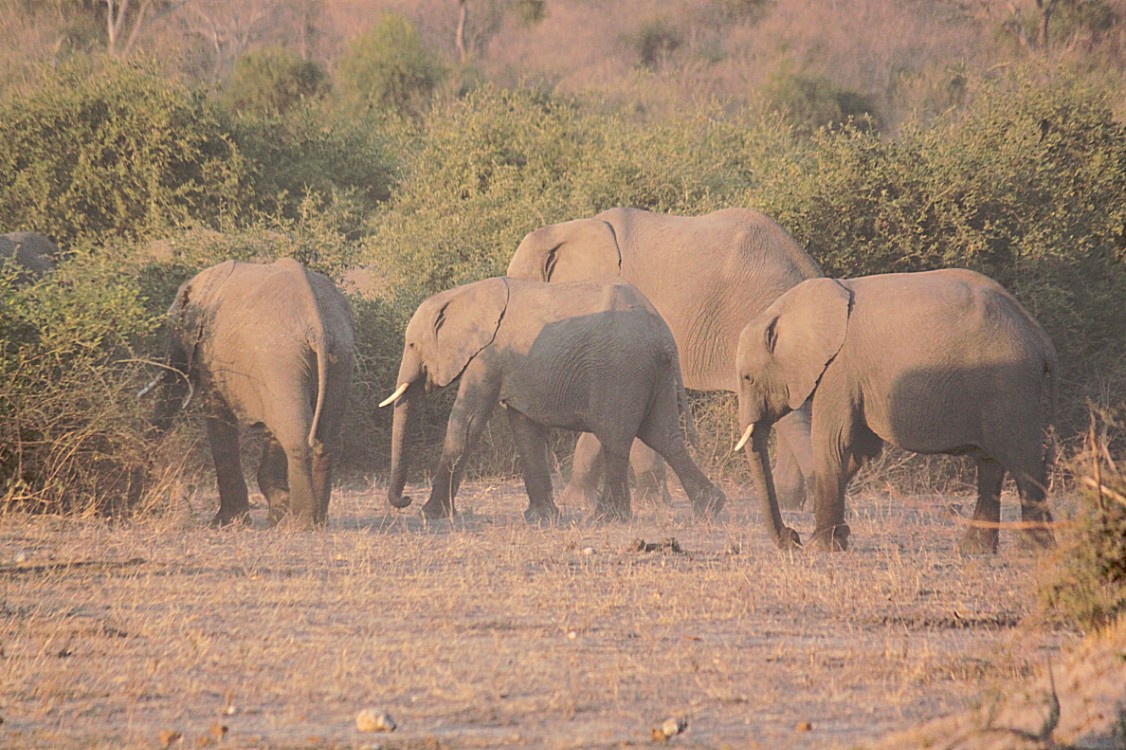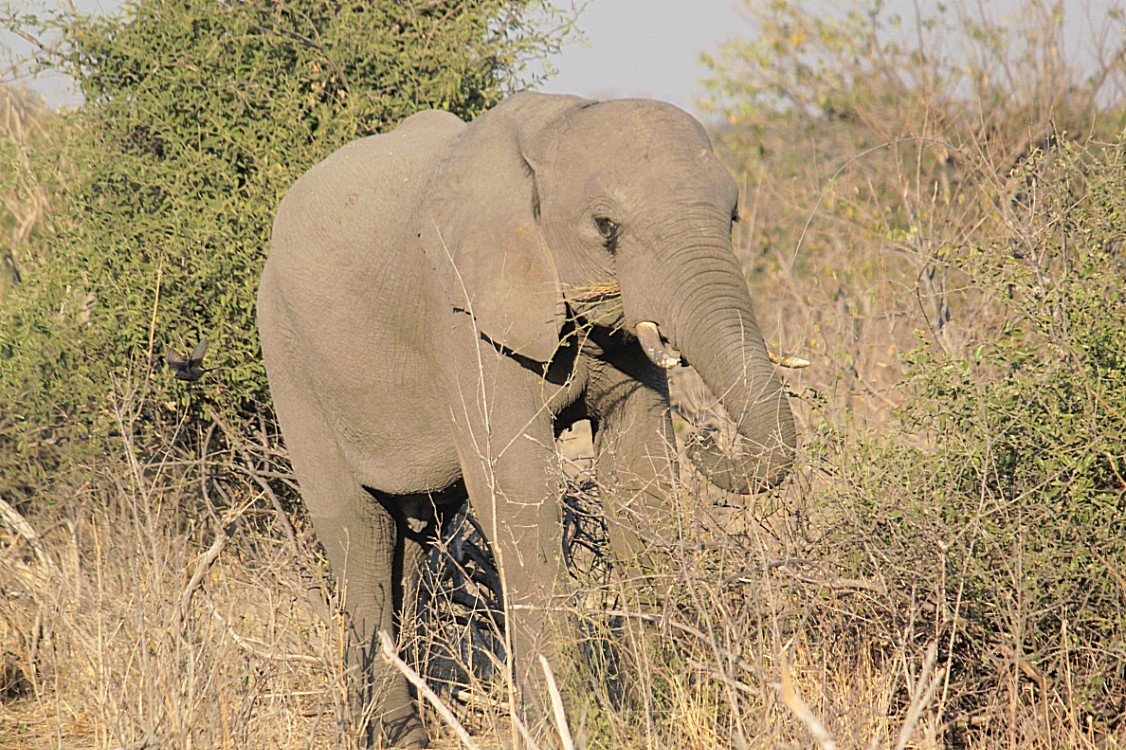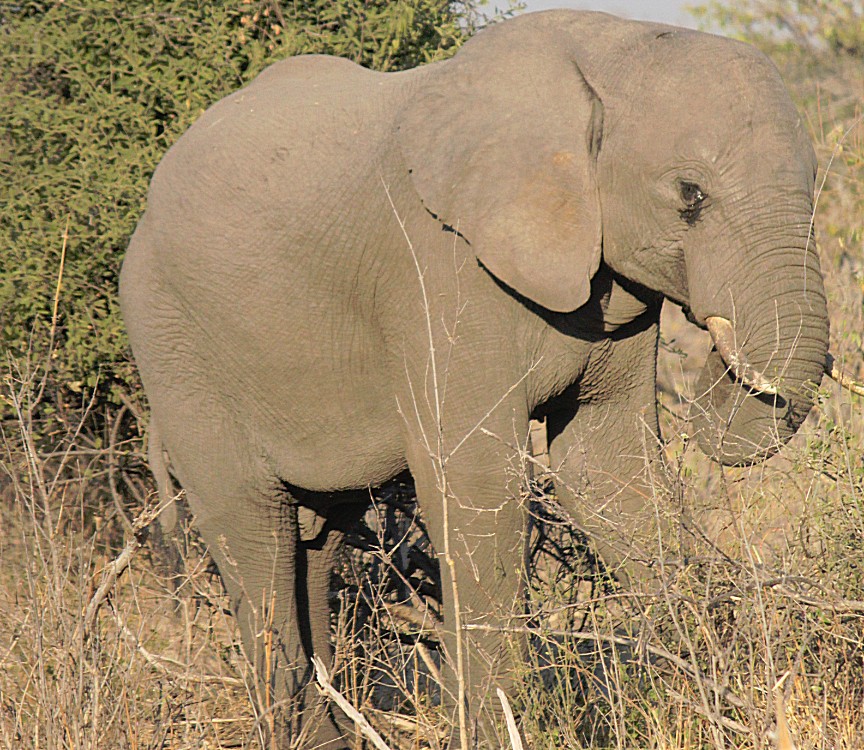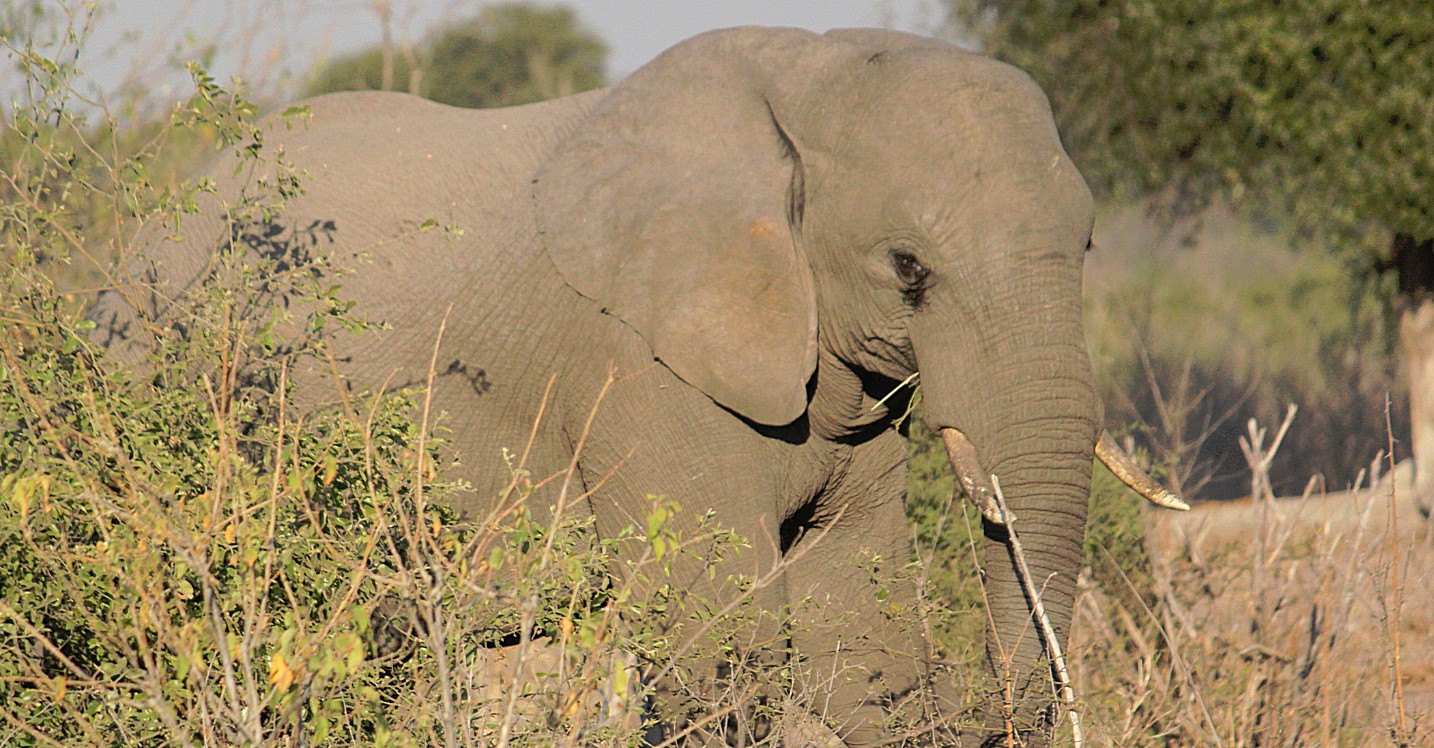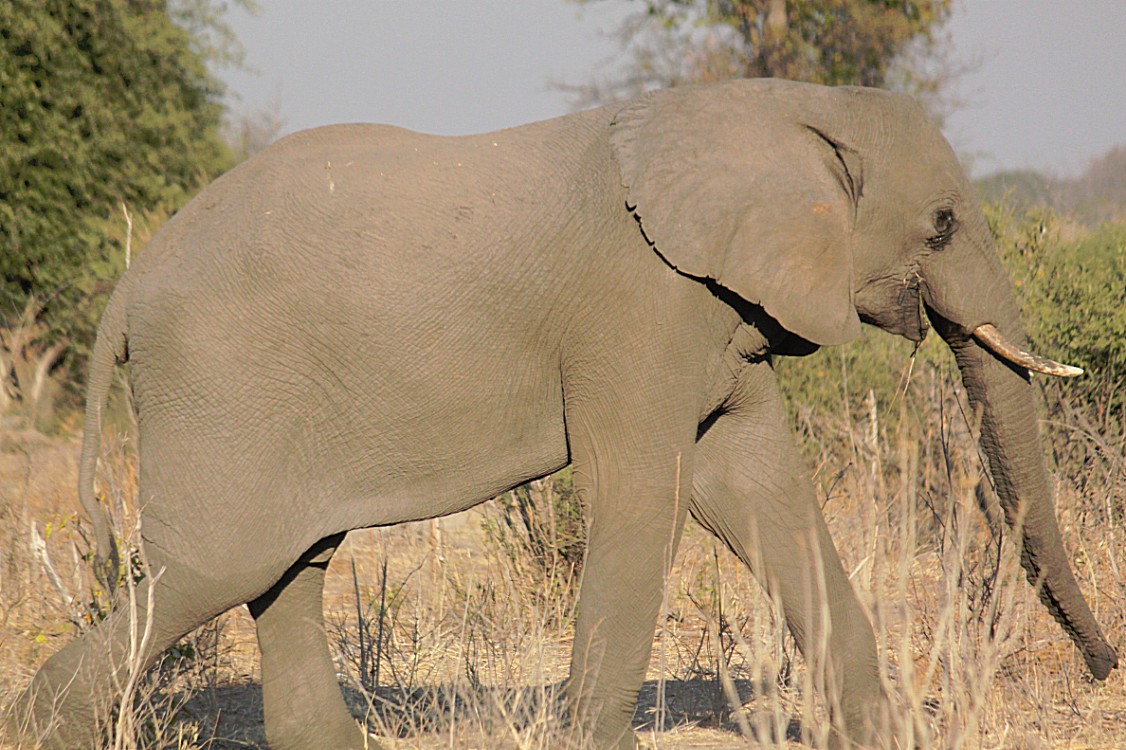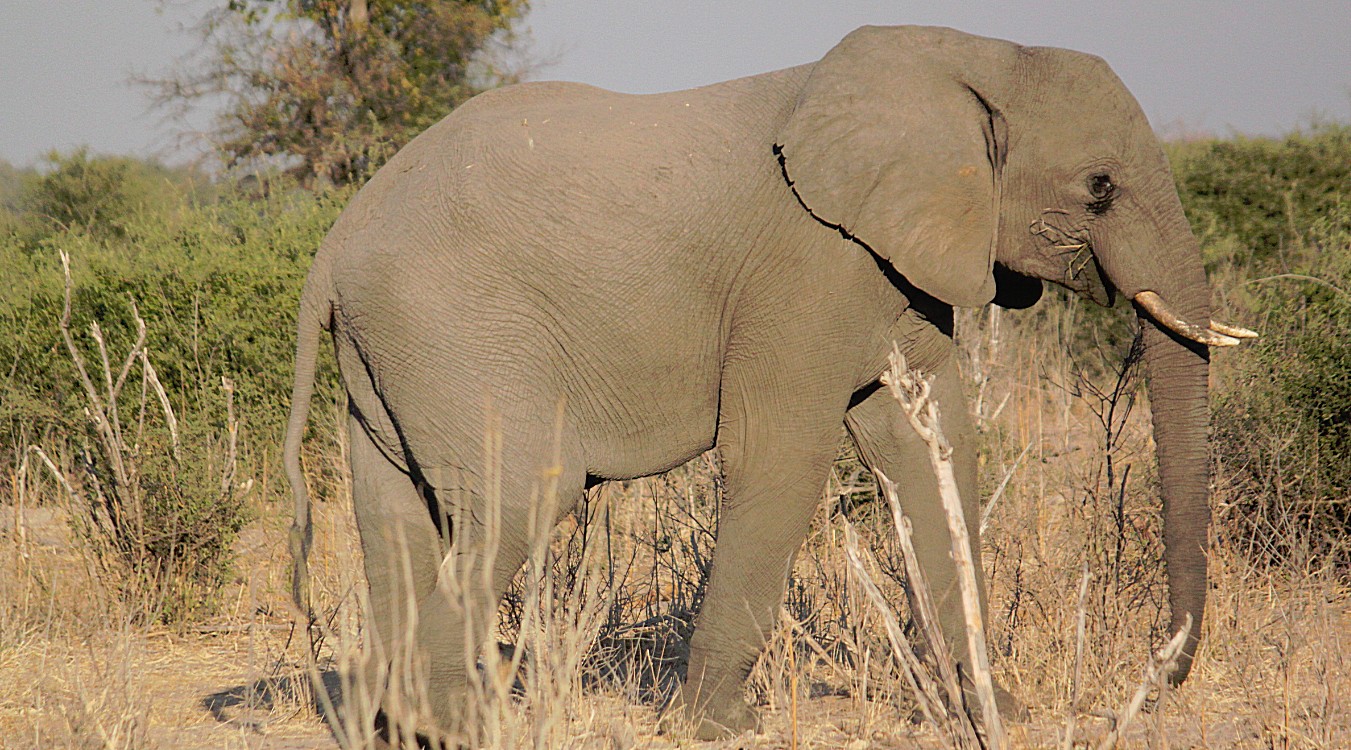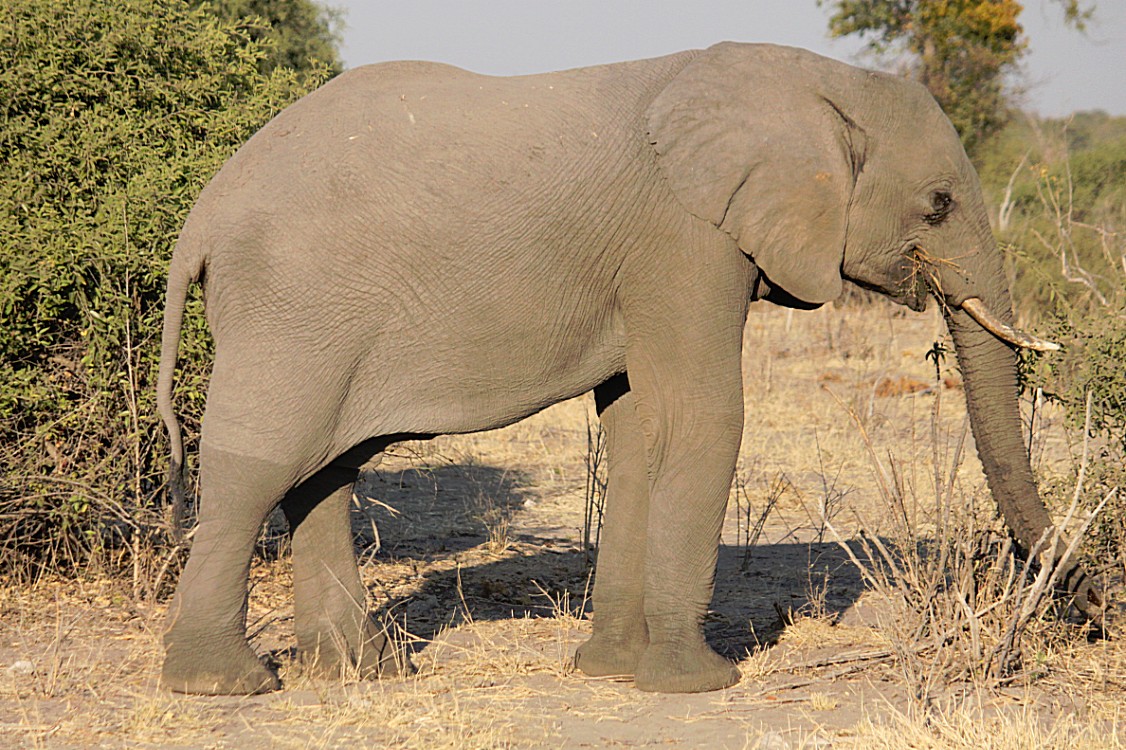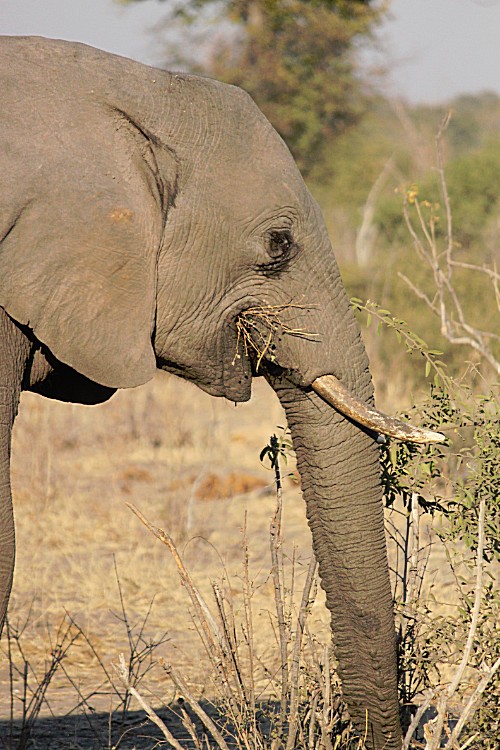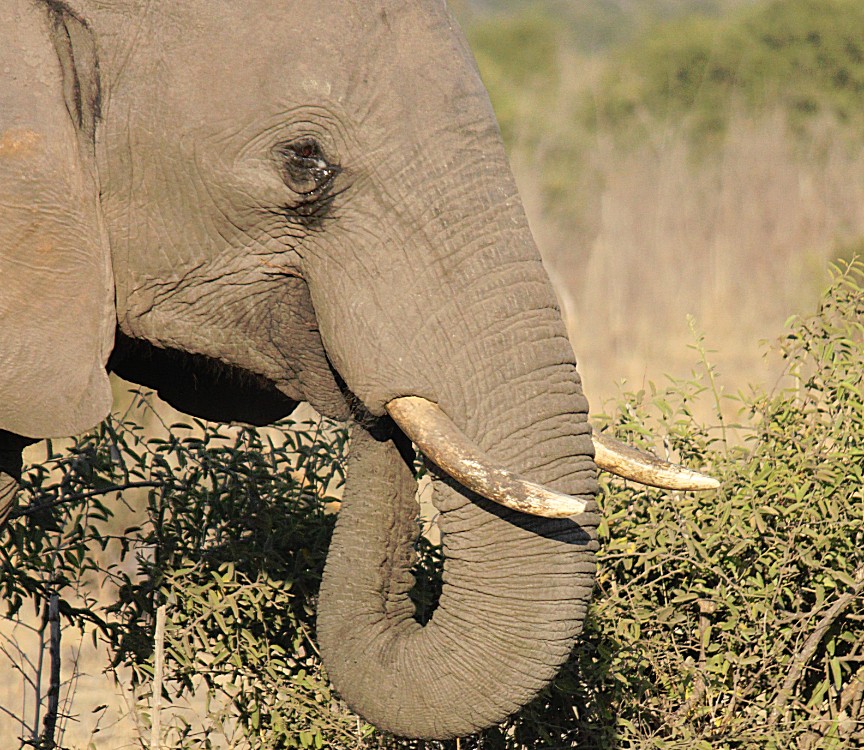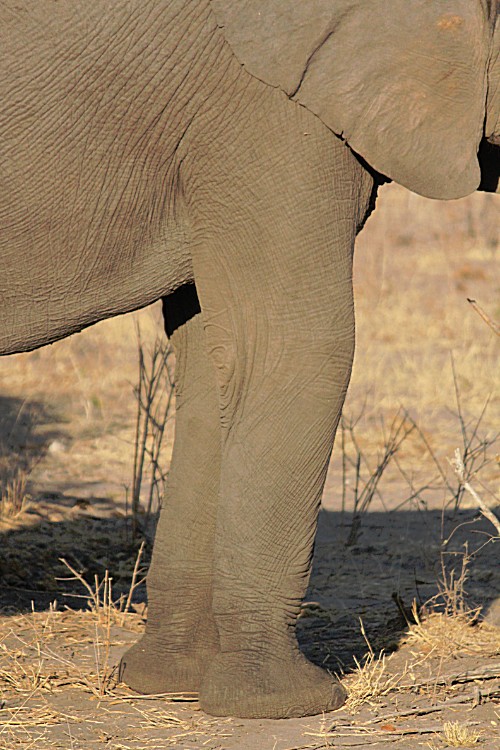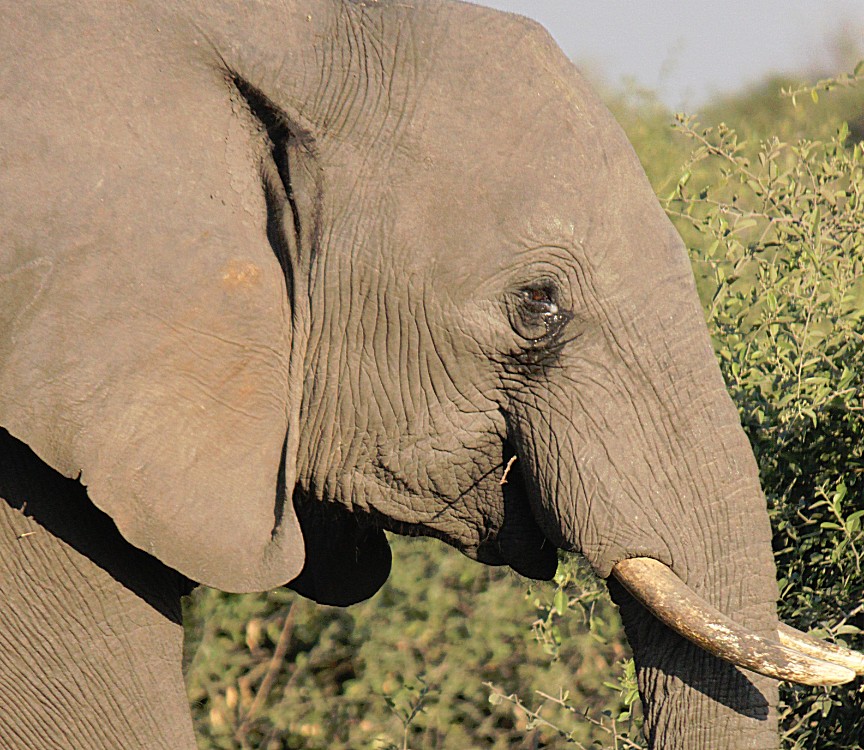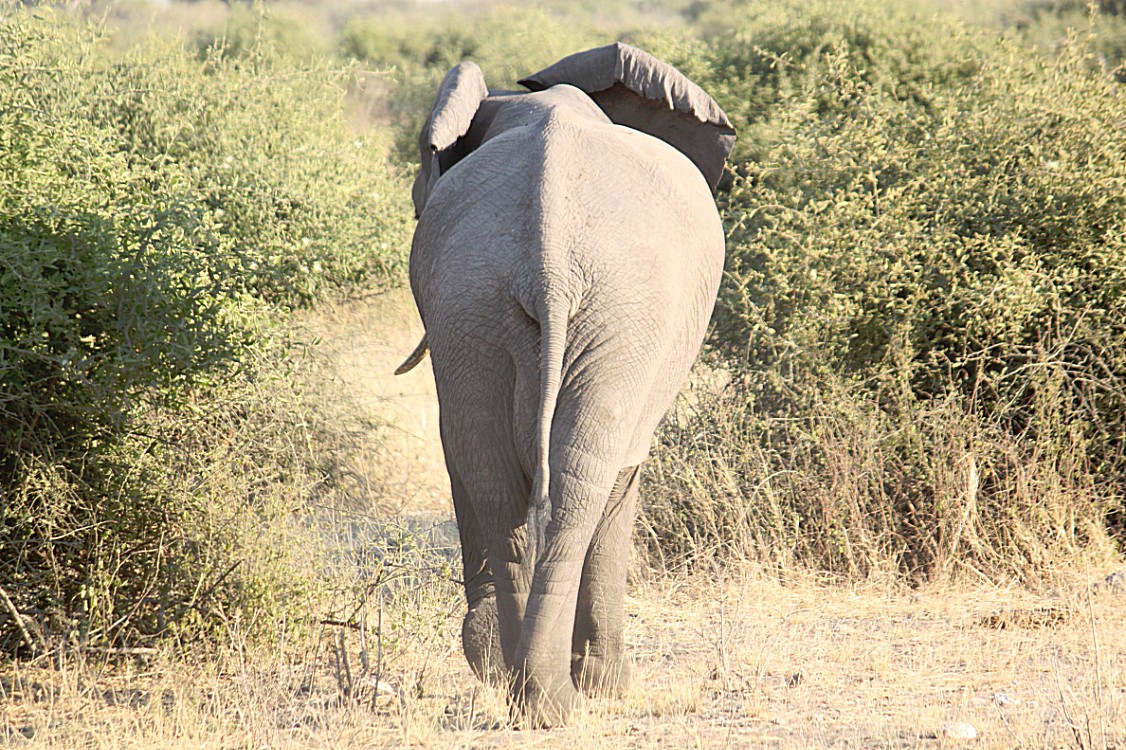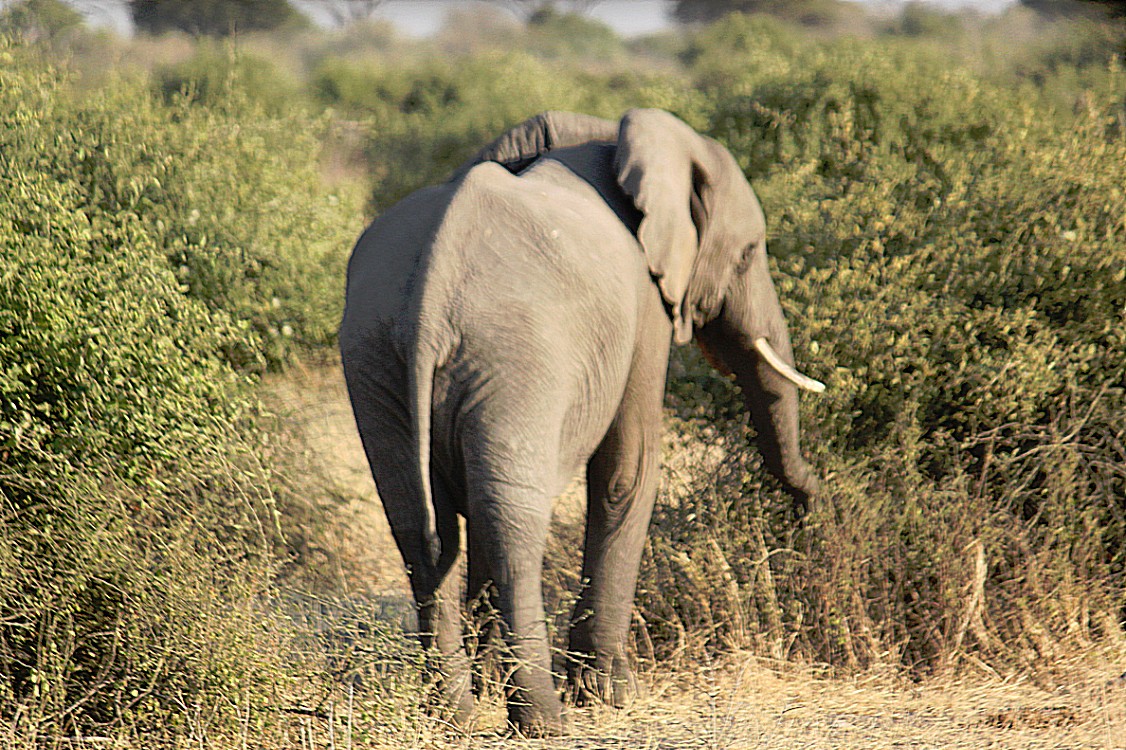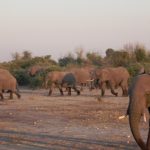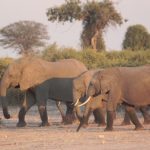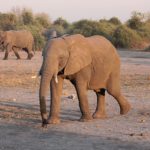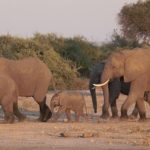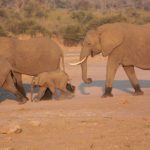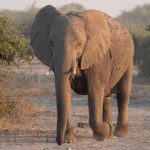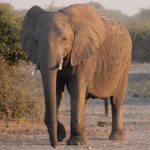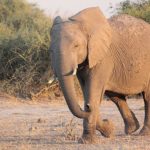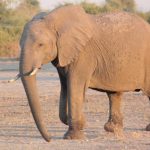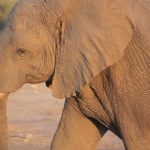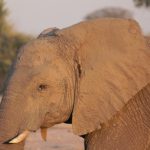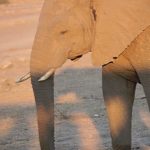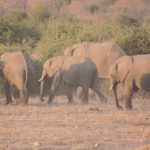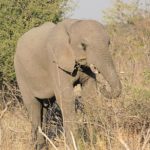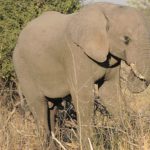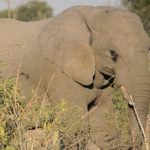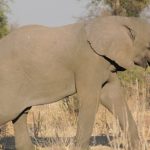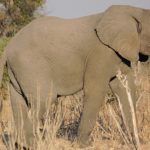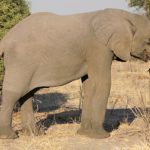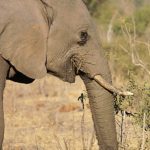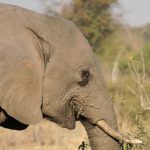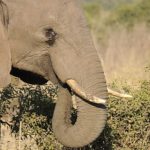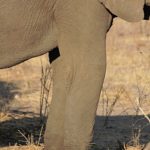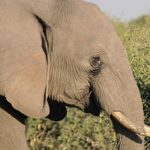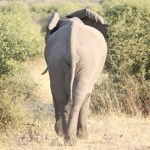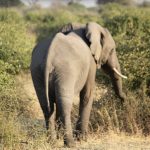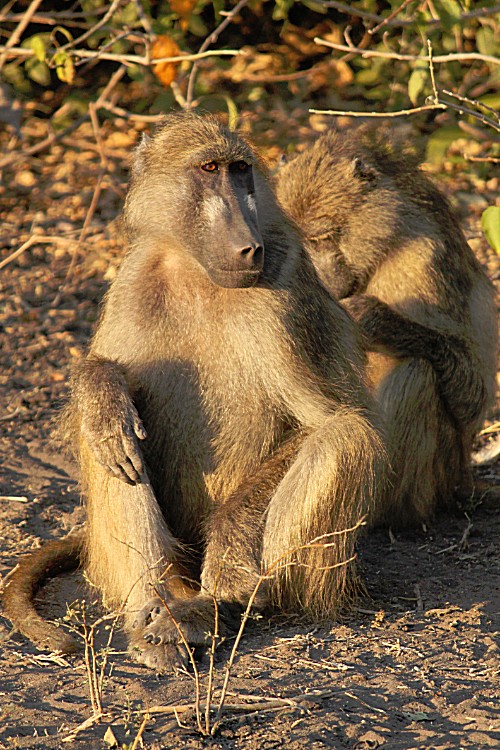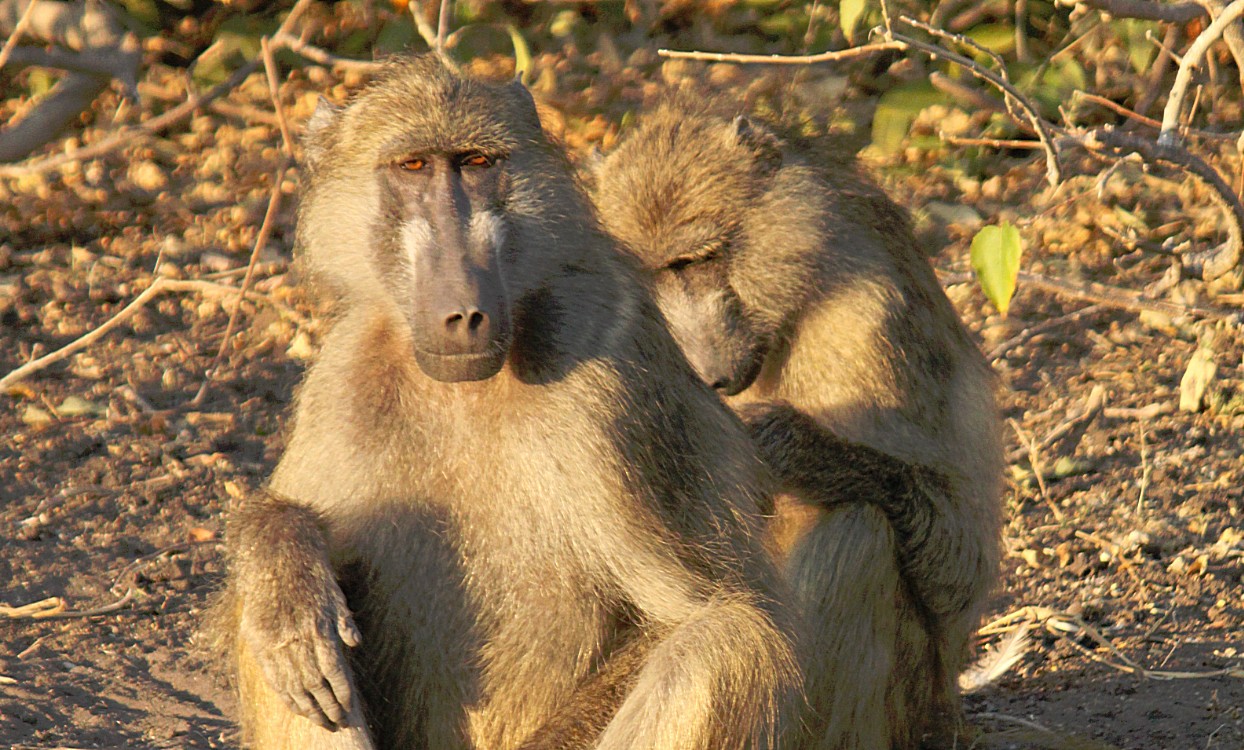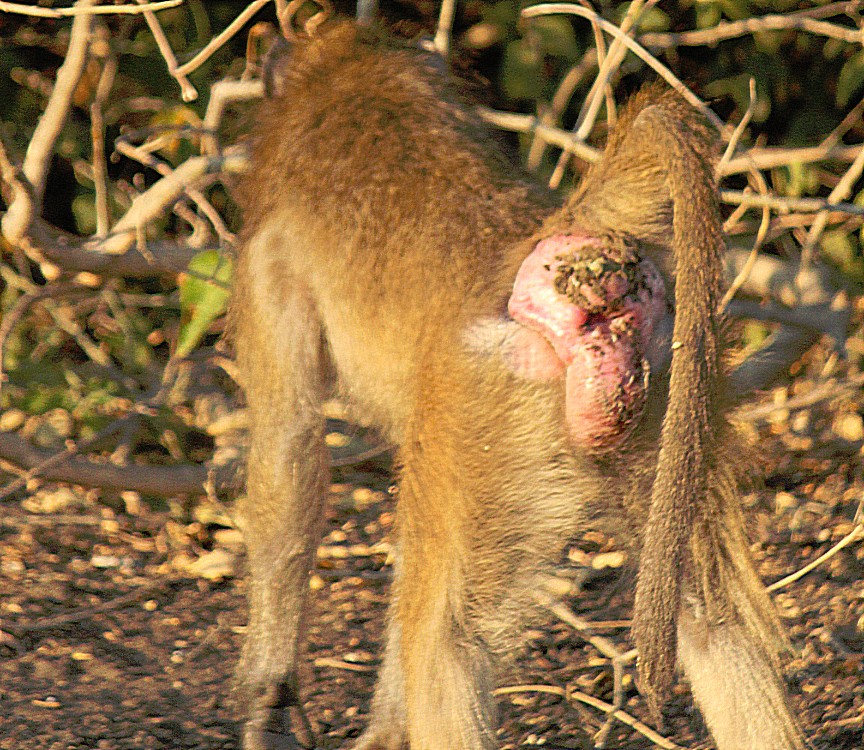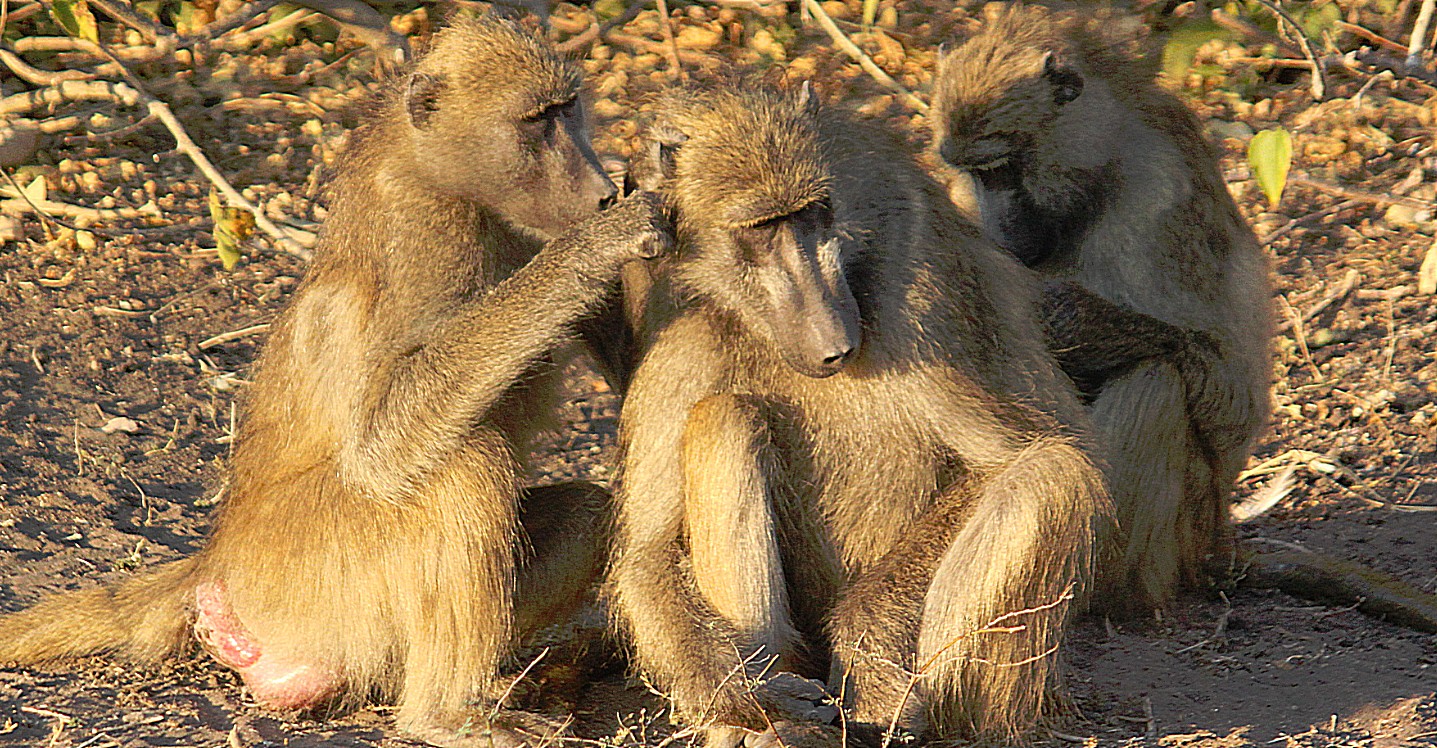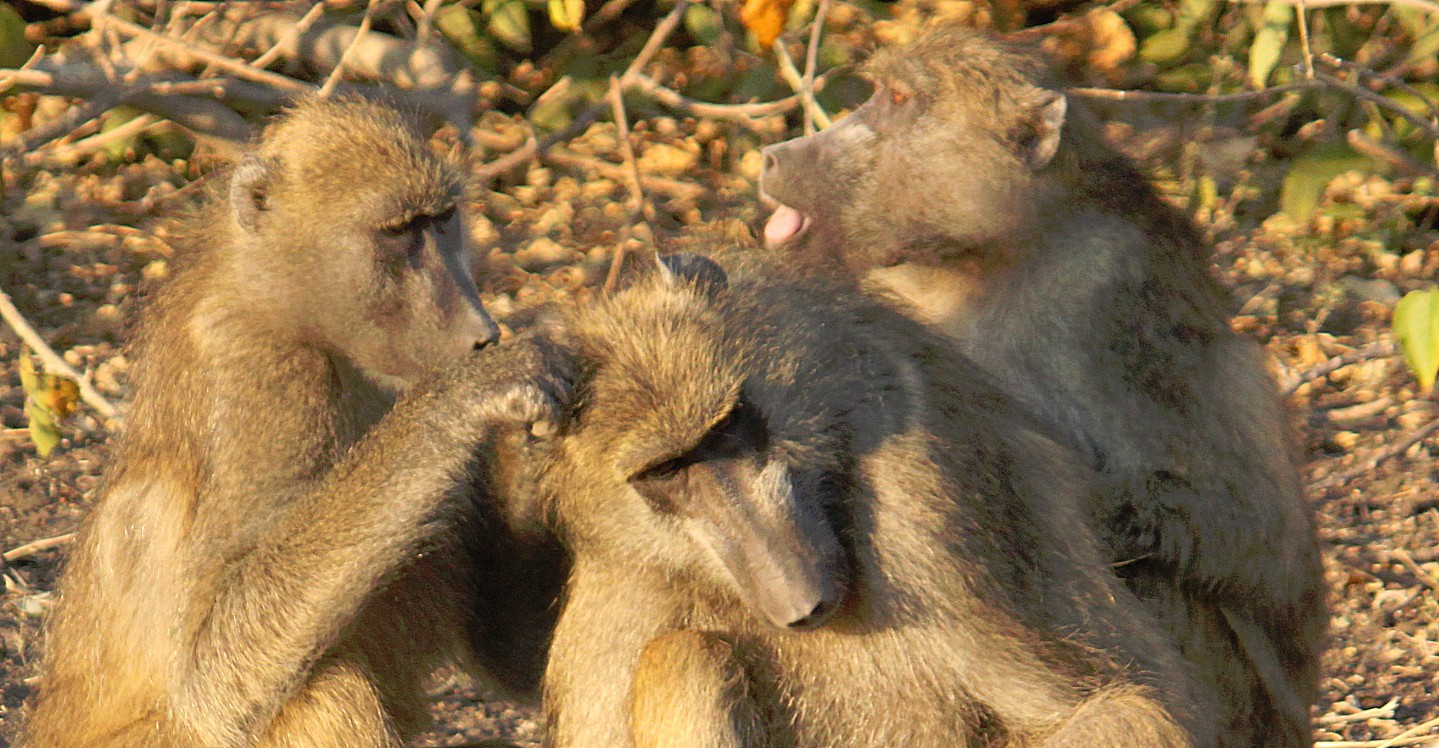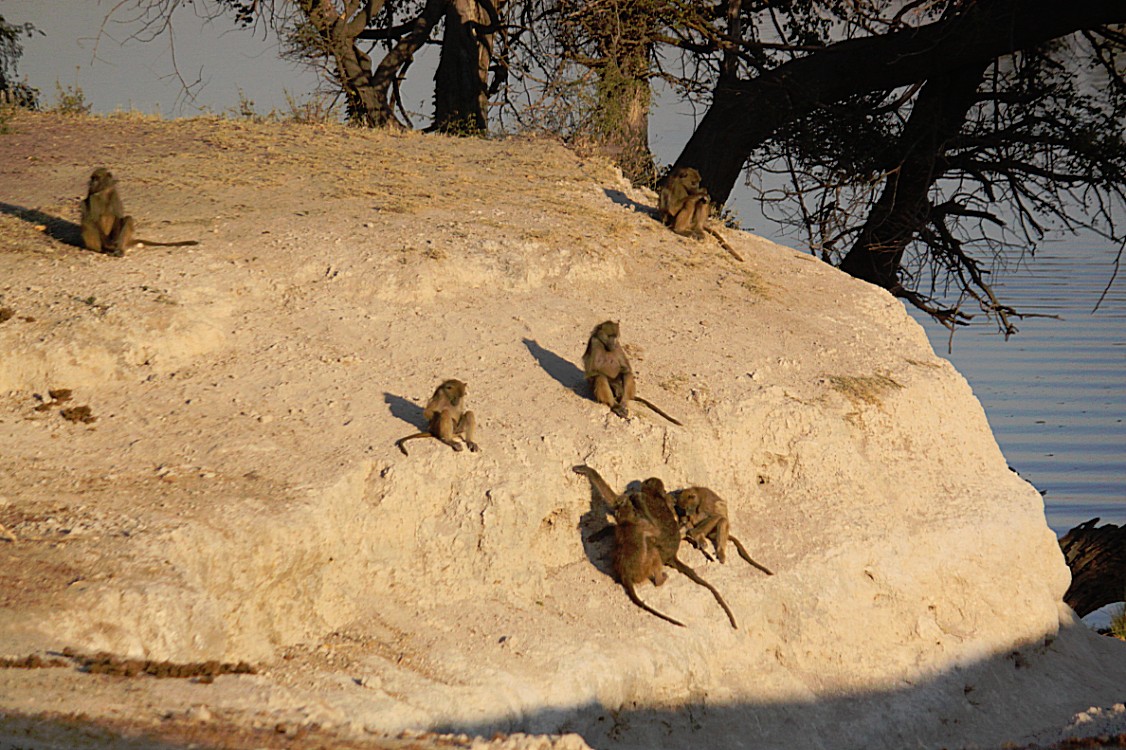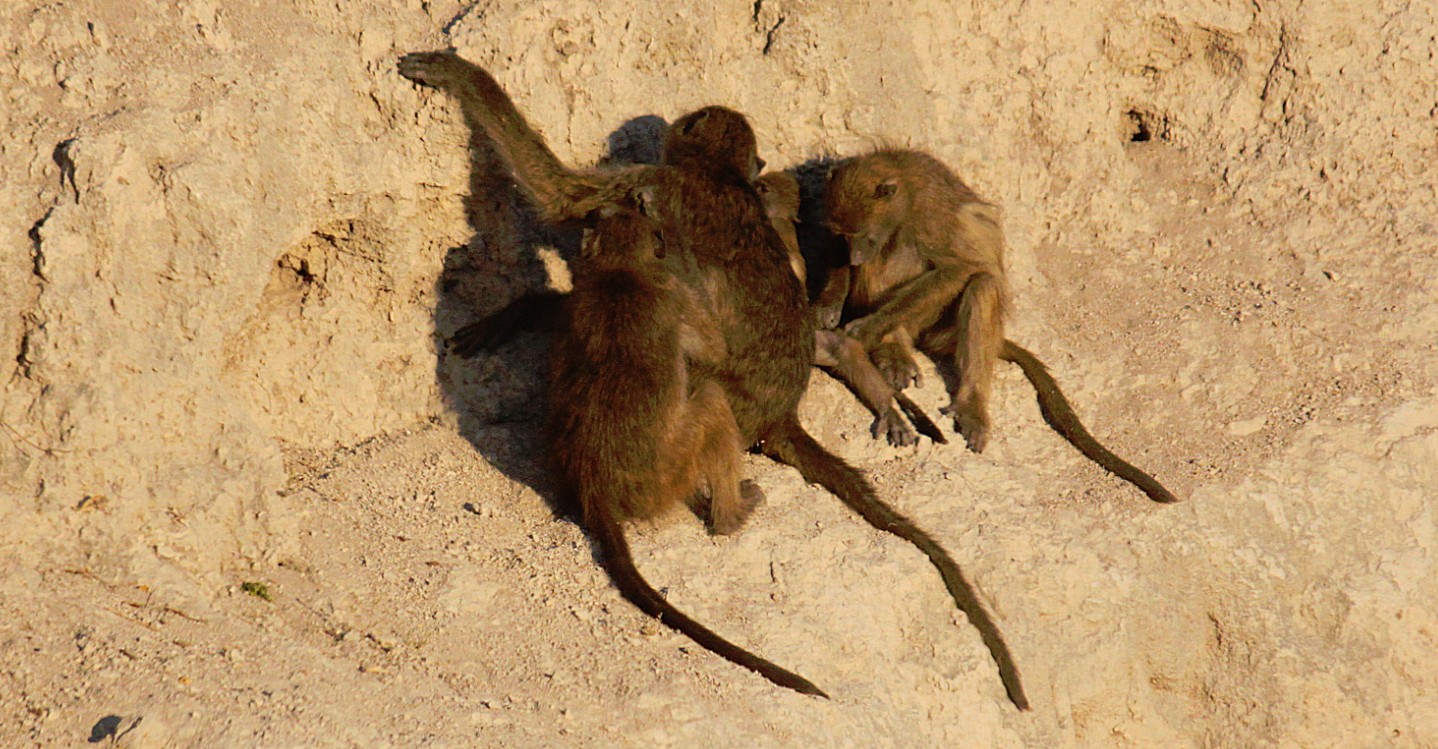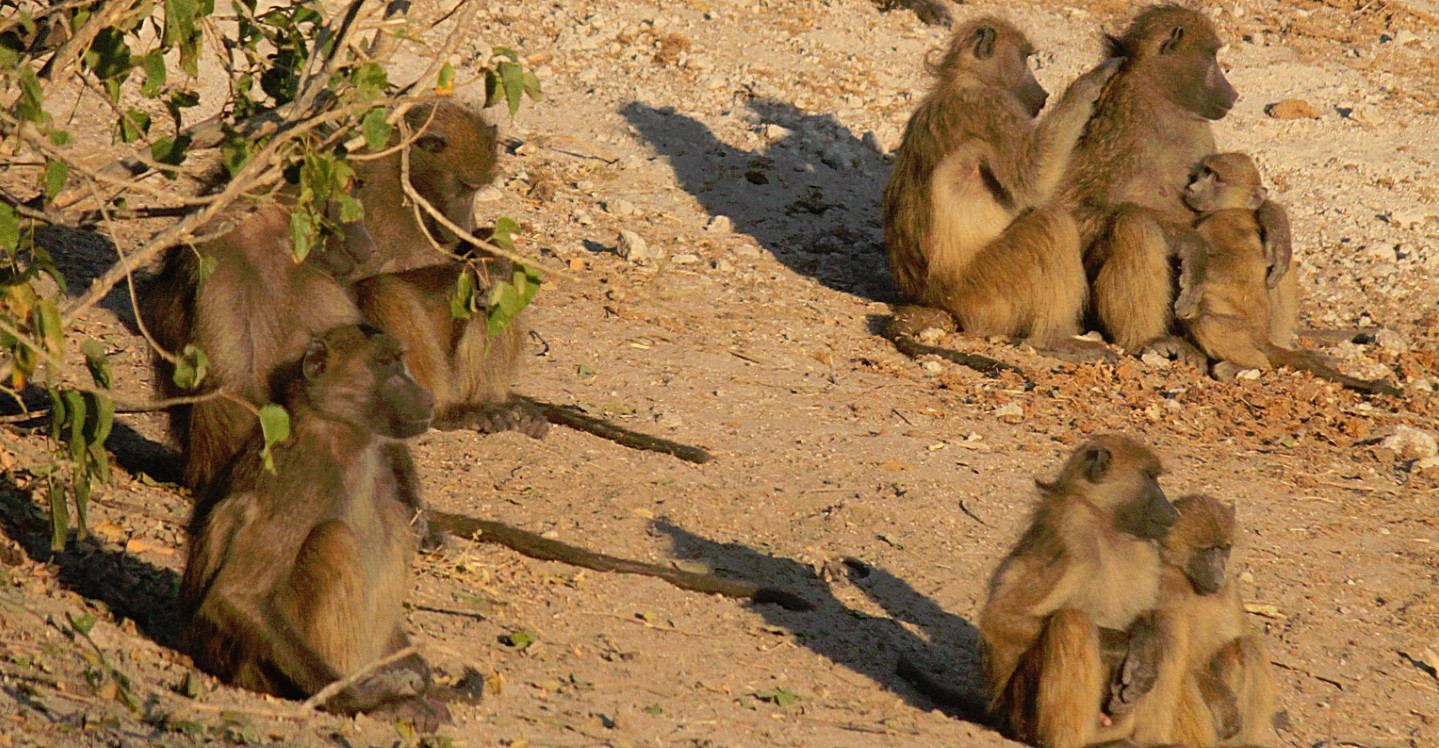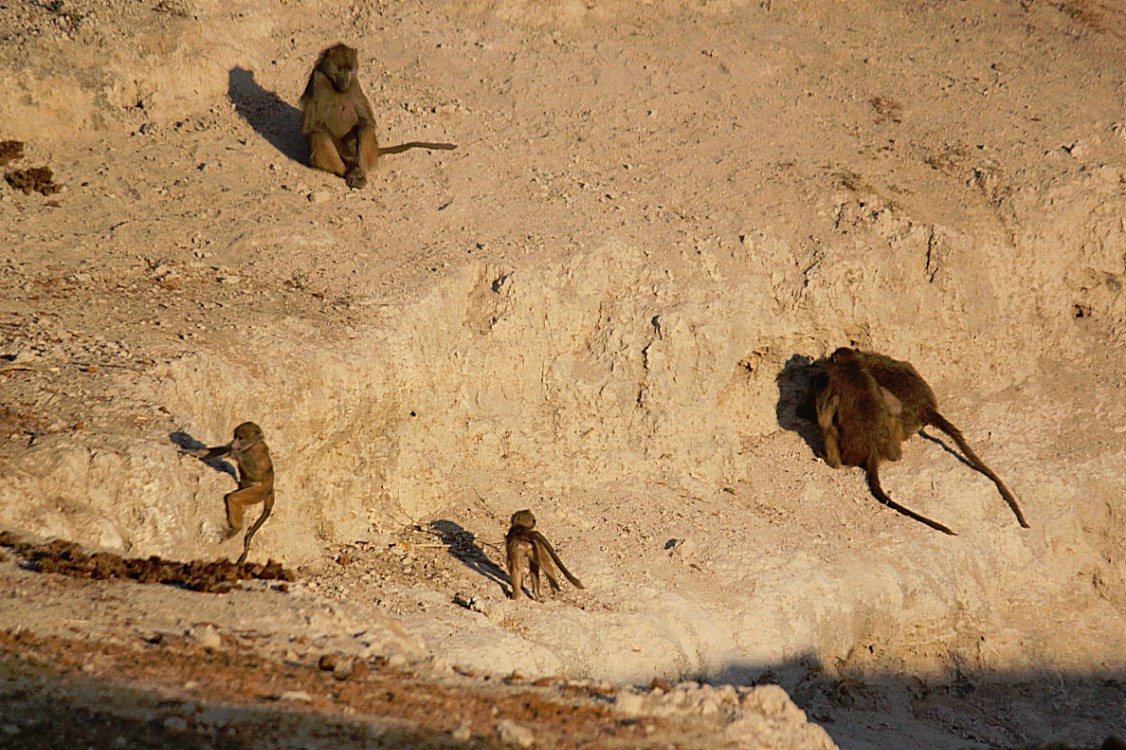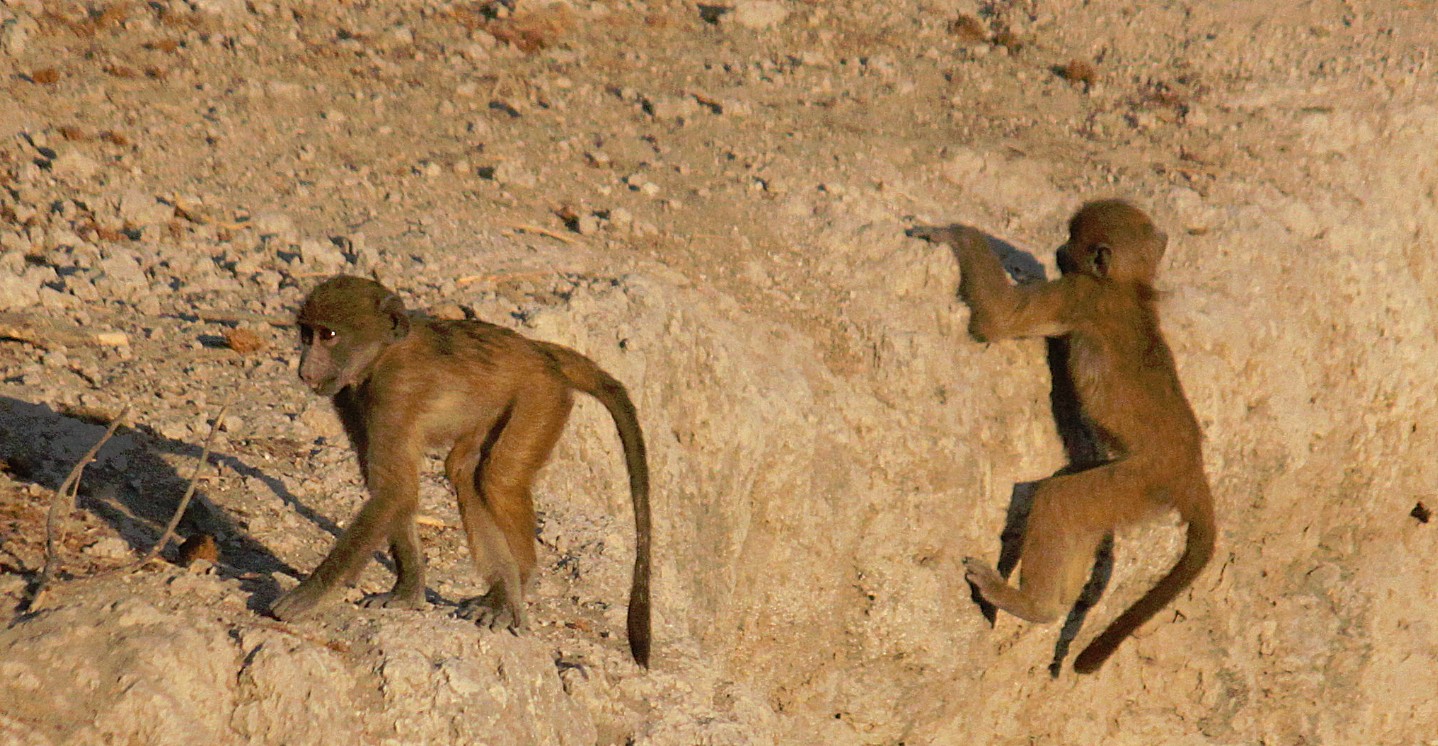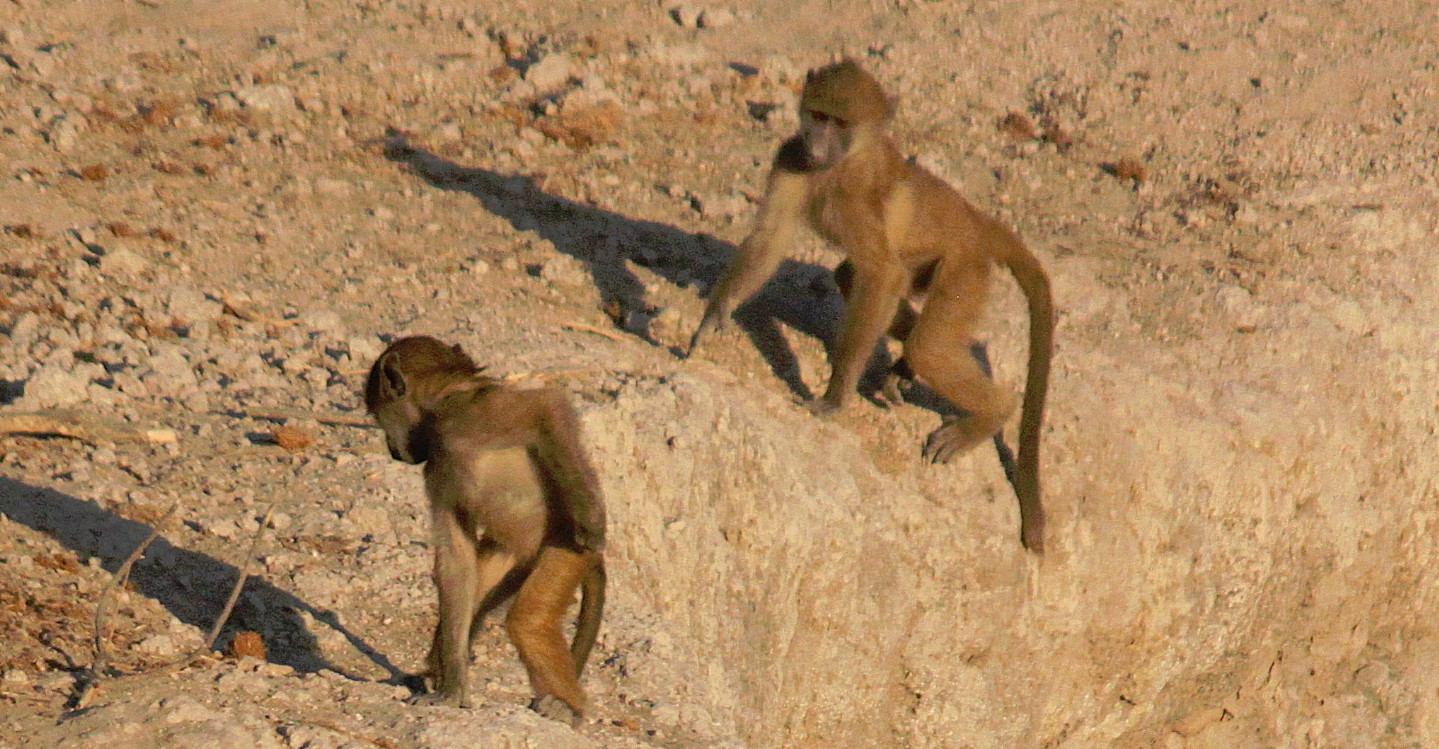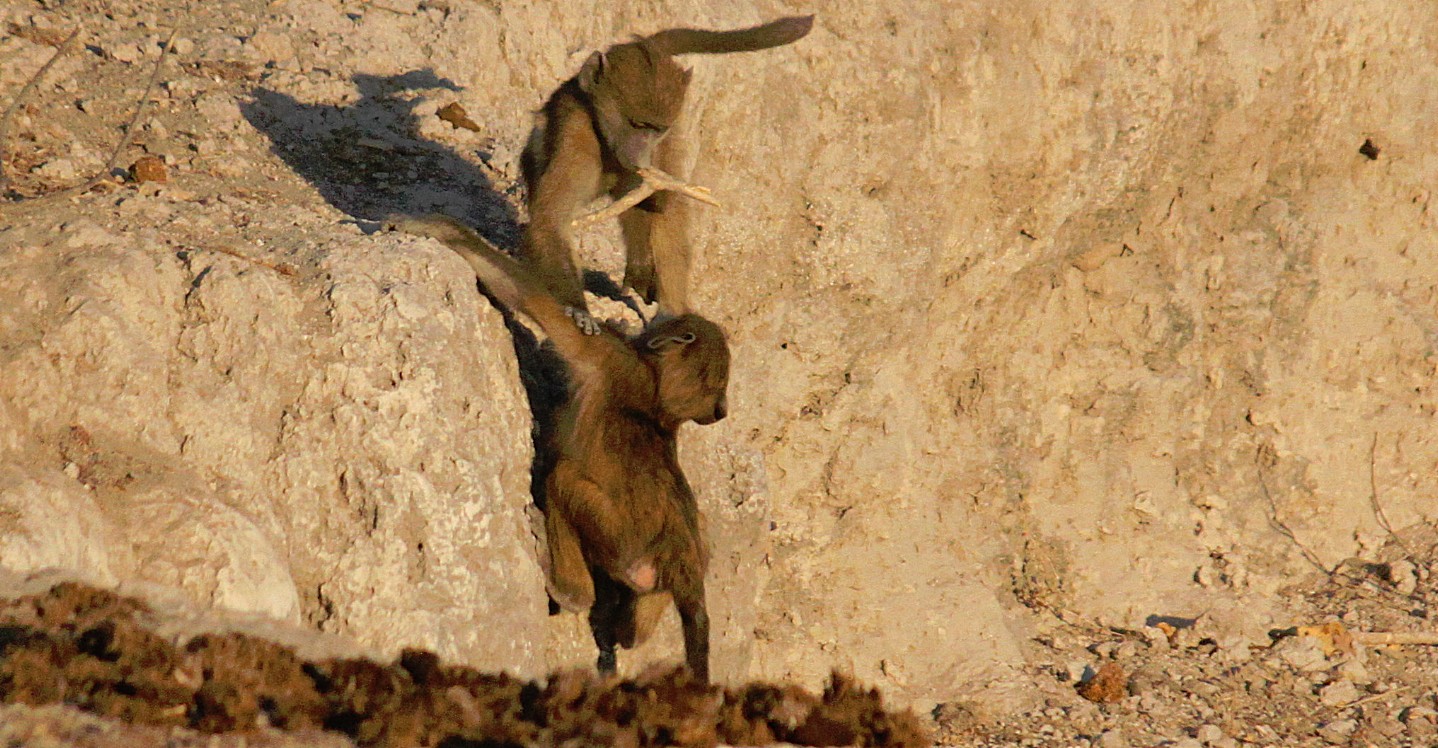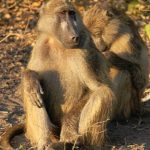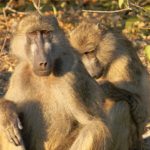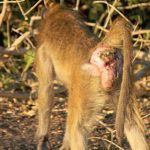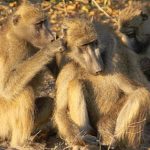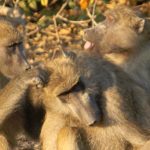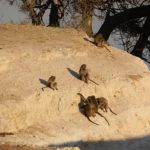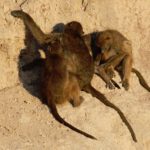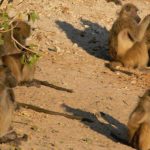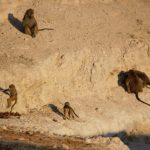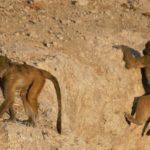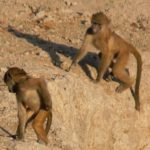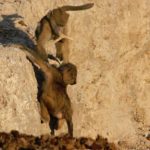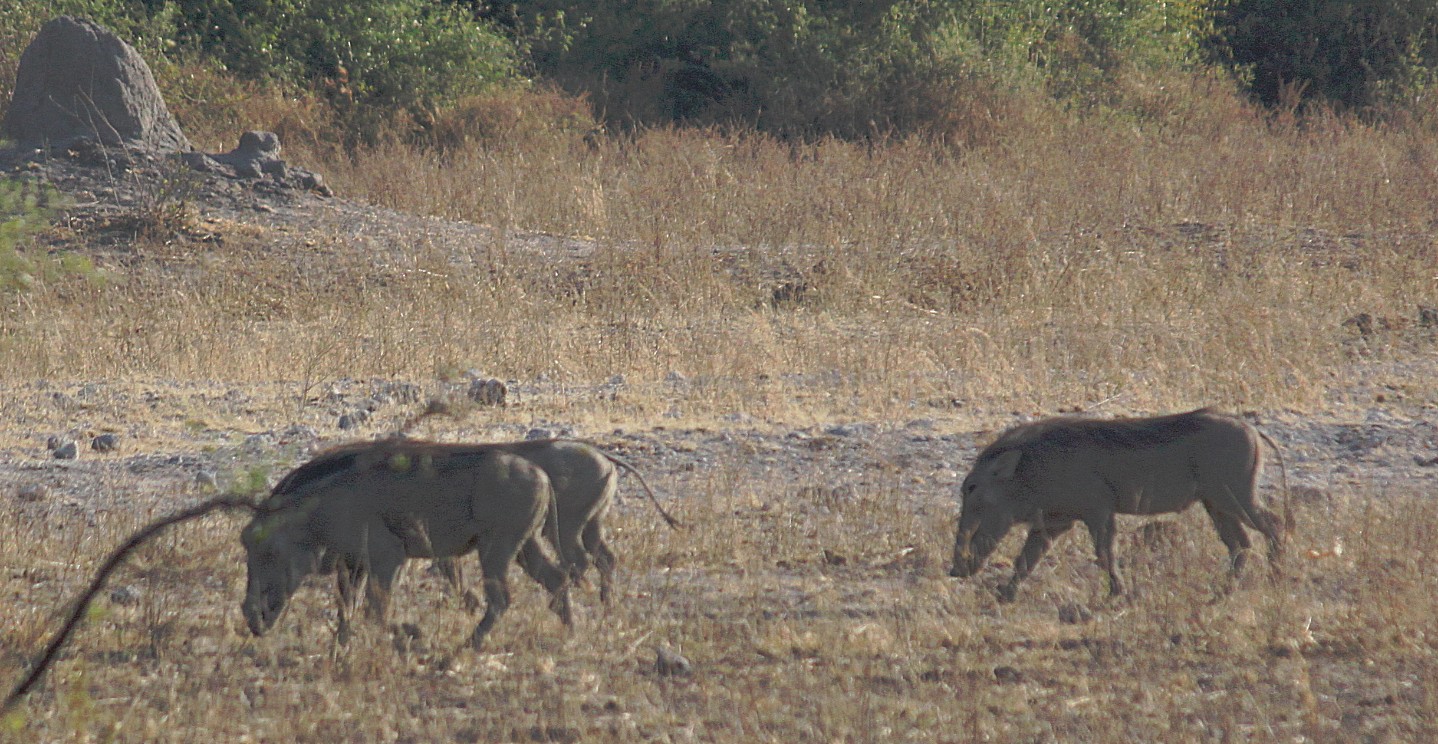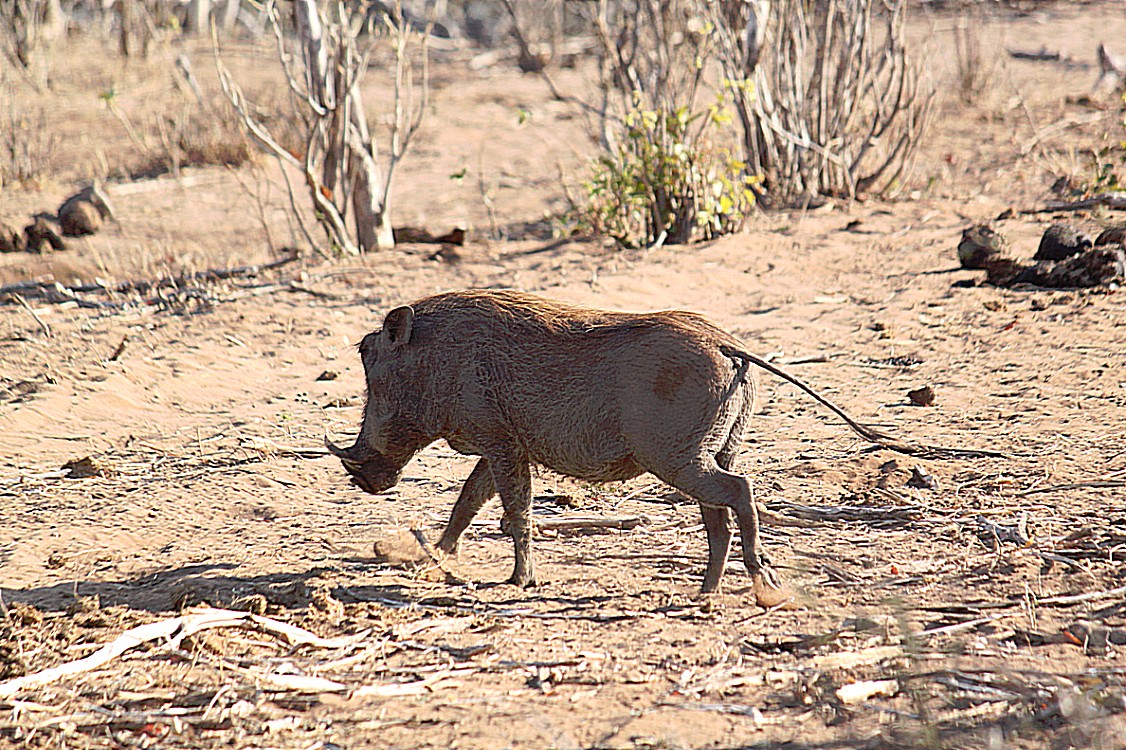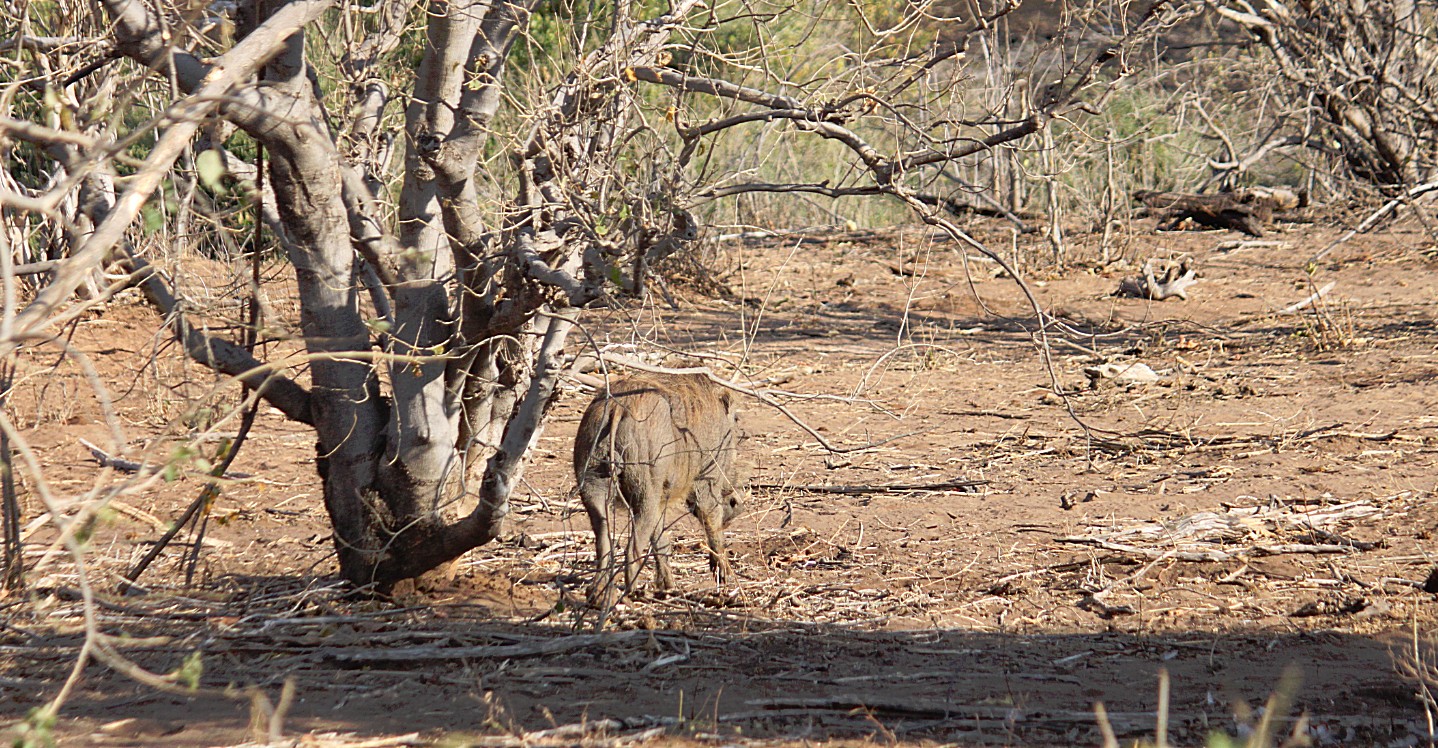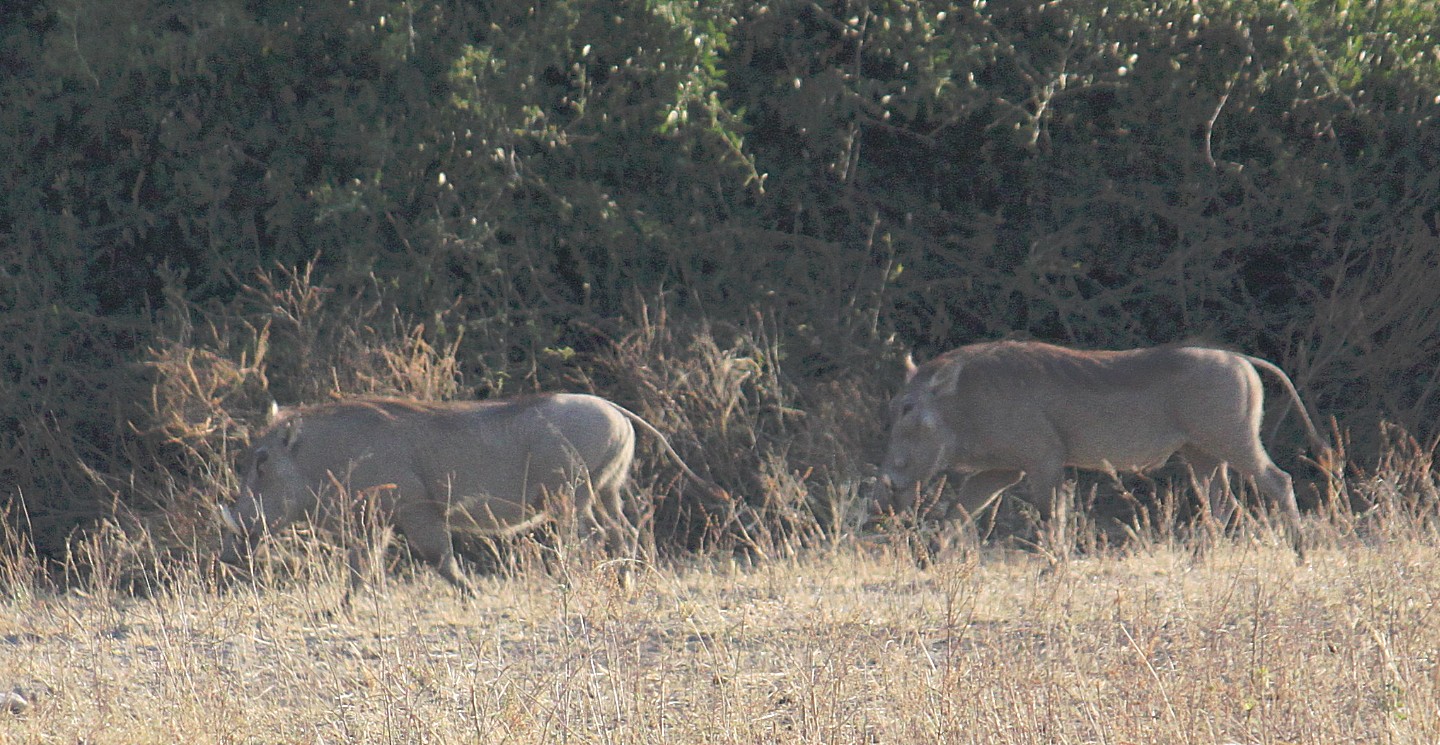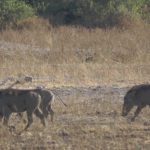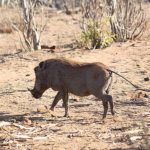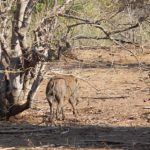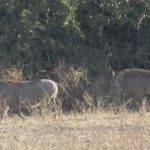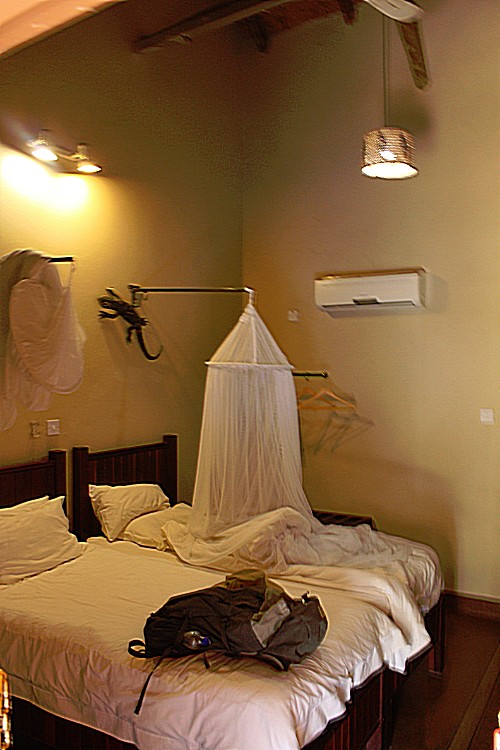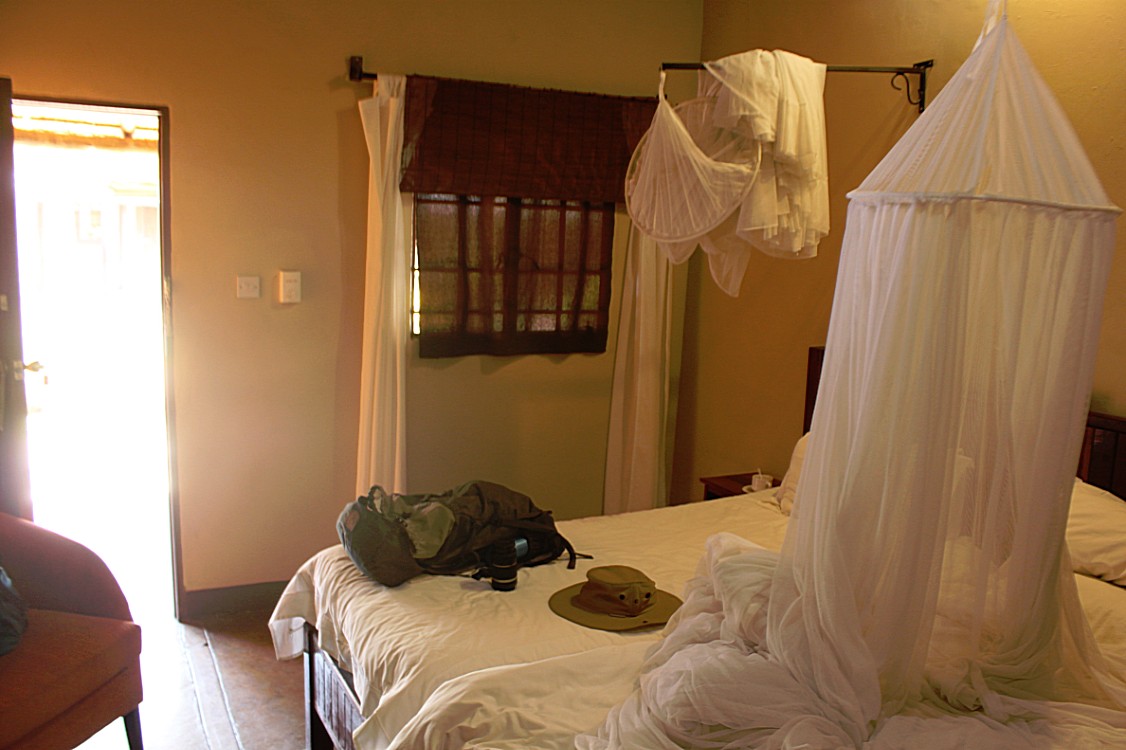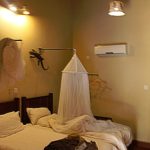4. Botswana: Chobe National Park – Safari – 2015
Very early before sunrise The Wandelgek stepped into a four wheel drive car and for the next few hours he participated in an awesome safari through Chobe National Park…
It was even that early when it’s difficult to make photographs and choose the right ISO values due to the quickly changing light intensity and the quick choices needed to make wildlife photographs. Animals don’t care wether they walk with the sun behind or in front of them 😉
African Fish Eagles
First I saw this couple of Africa Fish Eagles in a tree…
Marabou Storks
Then there were lots of Marabou storks also up in the trees…
The marabou stork (Leptoptilos crumenifer) is a large wading bird in the stork family Ciconiidae. It breeds in Africa south of the Sahara, in both wet and arid habitats, often near human habitation, especially landfill sites. It is sometimes called the “undertaker bird” due to its shape from behind: cloak-like wings and back, skinny white legs, and sometimes a large white mass of “hair”.
They probably knew what was creeping around in the half light on the forest floor…
…like…
Spotted Hyenas
Helmeted Guinea Fowls
The helmeted guineafowl (Numida meleagris) is the best known of the guineafowl bird family, Numididae, and the only member of the genus Numida. It is native to Africa, mainly south of the Sahara, and has been widely introduced into the West Indies, Brazil, Australia and Europe (e.g. southern France).
Crossing the dirtroad while driving by was a large flock of Guinea Fowles…
Finally … Sunrise…
 I really love how this pic came out…!!! It was quite difficult to shoot because of leaning backwards from my own vehicle and the constant bumps in the road 🙂
I really love how this pic came out…!!! It was quite difficult to shoot because of leaning backwards from my own vehicle and the constant bumps in the road 🙂
Impala
Elephants
The gentle giants of Africa…
Black-backed Jackal
The black-backed jackal (Canis mesomelas) is a canid native to two areas of Africa, separated by roughly 900 km.
One region includes the southernmost tip of the continent, including South Africa, Namibia, Botswana, and Zimbabwe. The other area is along the eastern coastline, including Kenya, Somalia, Djibouti, Eritrea and Ethiopia. It is listed by the IUCN as least concern, due to its widespread range and adaptability, although it is still persecuted as a livestock predator and rabies vector.
Compared to other members of the genus Canis, the black-backed jackal is a very ancient species, and has changed little since the Pleistocene, being the most basal canine alongside the closely related side-striped jackal. It is a fox-like canid with a reddish coat and a black saddle that extends from the shoulders to the base of the tail. It is a monogamous animal, whose young may remain with the family to help raise new generations of pups. The black-backed jackal is not a fussy eater, and will feed on small to medium-sized animals, as well as plant matter and human refuse.
Corey Bustard
Chacma Baboons
Golden Eagle
The golden eagle (Aquila chrysaetos) is one of the best-known birds of prey in the Northern Hemisphere. It is the most widely distributed species of eagle. Like all eagles, it belongs to the family Accipitridae. These birds are dark brown, with lighter golden-brown plumage on their napes. Immature eagles of this species typically have white on the tail and often have white markings on the wings. Golden eagles use their agility and speed combined with powerful feet and massive, sharp talons to snatch up a variety of prey (mainly hares, rabbits, marmots and other ground squirrels).
Golden eagles maintain home ranges or territories that may be as large as 200 km2 (77 sq mi). They build large nests in high places (mainly cliffs) to which they may return for several breeding years. Most breeding activities take place in the spring; they are monogamous and may remain together for several years or possibly for life. Females lay up to four eggs, and then incubate them for six weeks. Typically, one or two young survive to fledge in about three months. These juvenile golden eagles usually attain full independence in the fall, after which they wander widely until establishing a territory for themselves in four to five years.
Once widespread across the Holarctic, it has disappeared from many areas which are now more heavily populated by humans. Despite being extirpated from or uncommon in some of its former range, the species is still fairly ubiquitous, being present in sizeable stretches of Eurasia, North America, and parts of North Africa. It is the largest and least populous of the five species of true accipitrid to occur as a breeding species in both the Palearctic and the Nearctic.
For centuries, this species has been one of the most highly regarded birds used in falconry, with the Eurasian subspecies having been used to hunt and kill prey such as gray wolves (Canis lupus) in some native communities. Due to its hunting prowess, the golden eagle is regarded with great mystic reverence in some ancient, tribal cultures. The golden eagle is one of the most extensively studied species of raptor in the world in some parts of its range, such as the Western United States and the Western Palearctic.
Red-billed Hornbills
The red-billed hornbills are a group of hornbills found in savanna and woodland of sub-Saharan Africa. They are now usually split into five species, the northern red-billed hornbill (T. erythrorhynchus), western red-billed hornbill (T. kempi), Tanzanian red-billed hornbill (T. ruahae), southern red-billed hornbill (T. rufirostris) and Damara red-billed hornbill (T. damarensis), but some authorities considered them all to be subspecies of a single species.
This group of conspicuous birds have mainly whitish underparts and head, grey upperparts, long tails, and a long and curved red bill which lacks a casque. The sexes are similar, but the female has a smaller bill. They are generally large, at 42 centimetres (17 in) long, but the entire group is considered as one of the smaller hornbills.
Grey-headed Kingfisher
This is after the Malachite Kingfisher, the Pied Kingfisher and the Giant Kingfisher the 4th species of Kingfishers I ever saw…
The grey-headed kingfisher (Halcyon leucocephala) has a wide distribution from the Cape Verde Islands off the north-west coast of Africa to Mauritania, Senegal and Gambia, east to Ethiopia, Somalia and southern Arabia and south to South Africa.
A dry-country kingfisher of scrub and woodland, solitary or in pairs, often found near water, but unlike most kingfishers is not aquatic. Perches on a branch, unmoving for long periods while watching the ground for signs of insects or small lizards, bobbing head before diving on prey. In appearance very like the brown-hooded kingfisher but with a red rather than red and black bill and similar to the woodland kingfisher, but the woodland kingfisher lacks the chestnut belly and has greater coverage of cyan feathers on the back. Nests in holes in steep riverbanks and is aggressively protective of its nest by repeated dive-bombing of foraging monitor lizards. It is parasitised by the greater honeyguide. This species migrates at night and is often killed by flying into obstacles such as buildings, towers and powerlines.
Warthogs
African White-backed Vulture
The white-backed vulture (Gyps africanus) is an Old World vulture in the family Accipitridae, which also includes eagles, kites, buzzards and hawks. It is closely related to the European griffon vulture, G. fulvus. Sometimes it is called African white-backed vulture to distinguish it from the Oriental white-backed vulture — nowadays usually called white-rumped vulture — to which it was formerly believed to be closely related.
The white-backed vulture is a typical vulture, with only down feathers on the head and neck, very broad wings and short tail feathers. It has a white neck ruff. The adult’s whitish back contrasts with the otherwise dark plumage. Juveniles are largely dark. This is a medium-sized vulture; its body mass is 4.2 to 7.2 kilograms (9.3–15.9 lb), it is 78 to 98 cm (31 to 39 in) long and has a 1.96 to 2.25 m (6 to 7 ft) wingspan.
Like other vultures it is a scavenger, feeding mostly from carcasses of animals which it finds by soaring over savannah. It also takes scraps from human habitations. It often moves in flocks. It breeds in trees on the savannah of west and east Africa, laying one egg. The population is mostly resident.
Giraffes

Small birds like this Yellow-billed Oxpecker (probably) live from small insects that parasite on the large mammals like giraffes or that are surprised hiding in the grasses when a mammal tramples through…
Kudus
Southern Ground Hornbills
The southern ground hornbill (Bucorvus leadbeateri; formerly known as Bucorvus cafer), is one of two species of ground hornbill and is the largest species of hornbill. The other species of the genus Bucorvus is the Abyssinian ground hornbill, B. abyssinicus.
Description
This is a large bird, at 90 to 129 centimetres (35.4 to 50.8 in) long. Females weigh 2.2 to 4.6 kilograms (4.9 to 10.1 lb), while the larger males weigh 3.5 to 6.2 kilograms (7.7 to 13.7 lb). Among standard measurements, the wing chord has been measured from 49.5 to 61.8 cm (19.5 to 24.3 in), the tail from 29 to 36 cm (11 to 14 in), the tarsus from 13 to 15.5 cm (5.1 to 6.1 in) and the culmen from 16.8 to 22.1 cm (6.6 to 8.7 in). Per Stevenson and Fanshawe, the Abyssinian ground hornbill is the larger species on average, at 110 cm (43 in), than the southern species, at 102 cm (40 in), but published weights and standard measurements contrarily indicate the southern species is indeed slightly larger.
The southern ground hornbill is characterized by black coloration and vivid red patches of bare skin on the face and throat (yellow in juvenile birds), which are generally believed to keep dust out of the birds eyes while they forage during the dry season. The white tips of the wings (primary feathers) seen in flight are another diagnostic characteristic. The beak is black and straight and presents a casque, more developed in males. Female southern ground hornbills are smaller and have violet-blue skin on their throats. Juveniles to six years old lack the prominent red pouch, but have a duller patch of grey in its place.
Accomodation
The accomodation in Kasane was neat and fine…
In the afternoon The Wandelgek boarded the truck and left for the Botswana-Zimbabwe border, now slowly, slowly reaching the main goal of this adventure…


